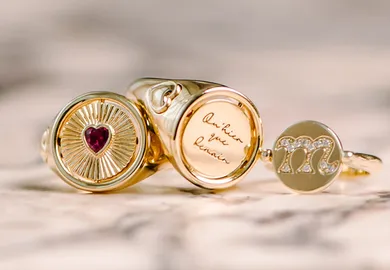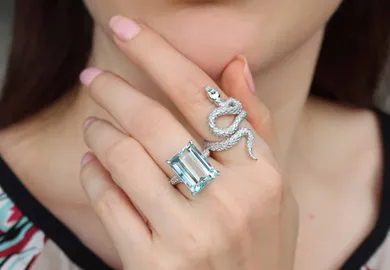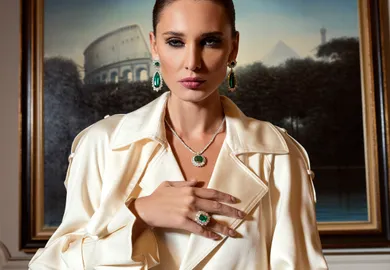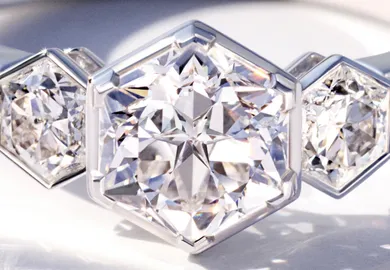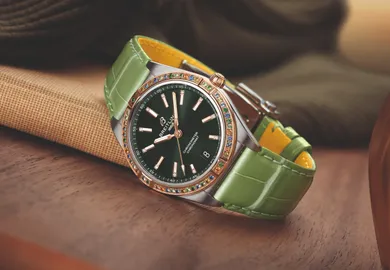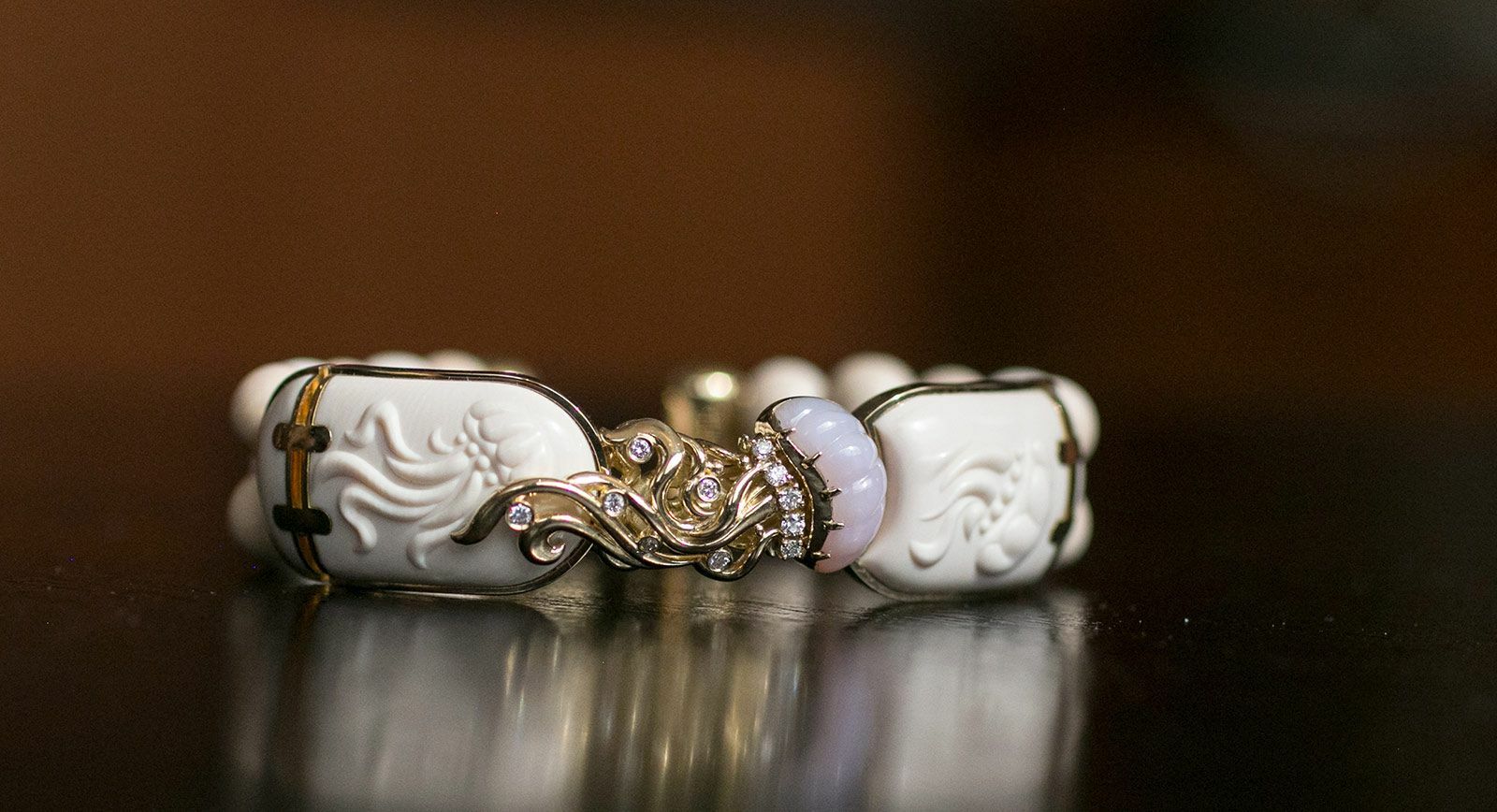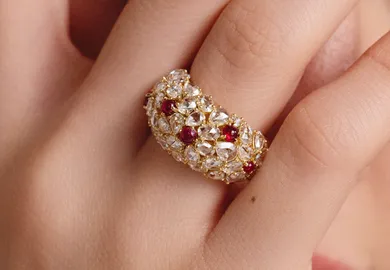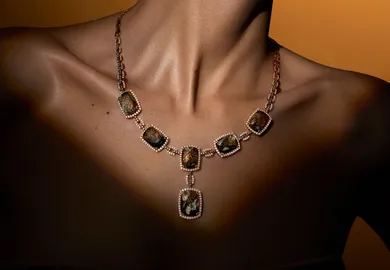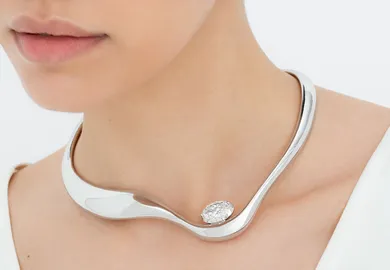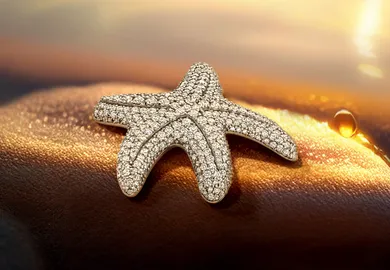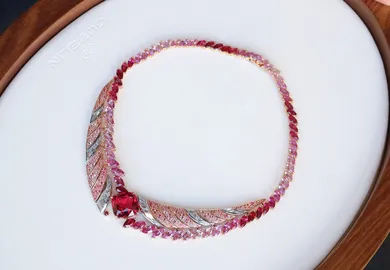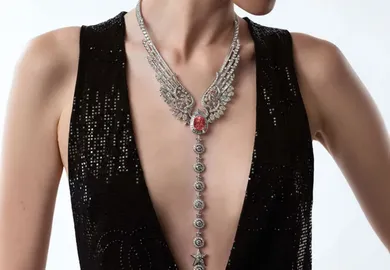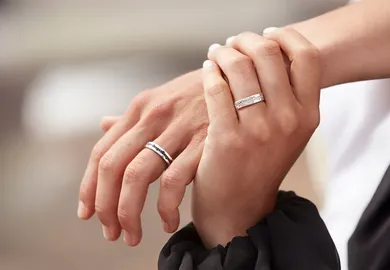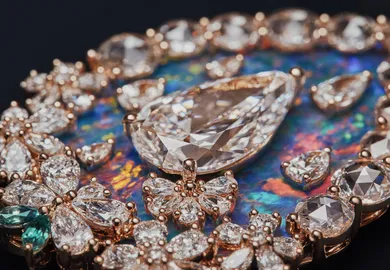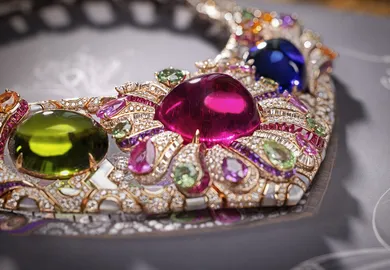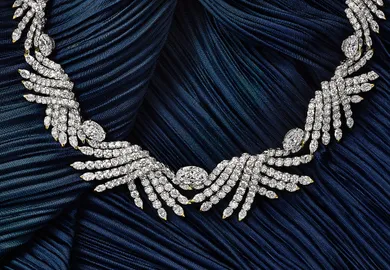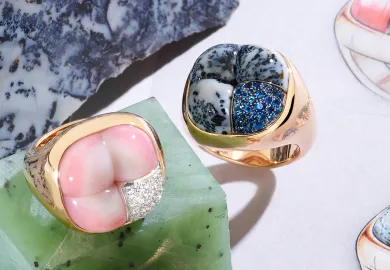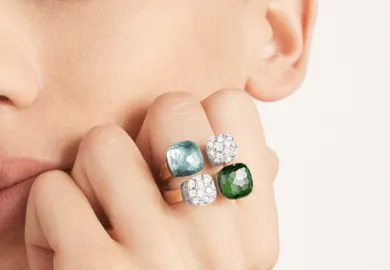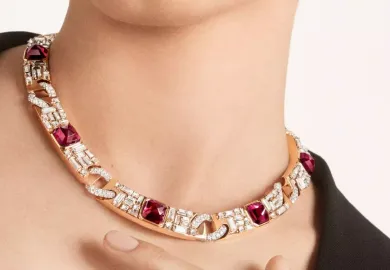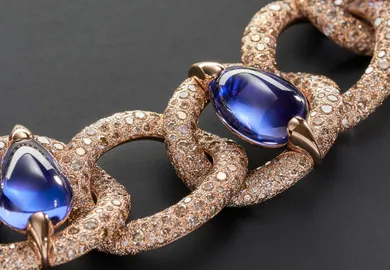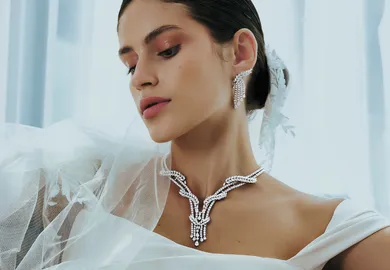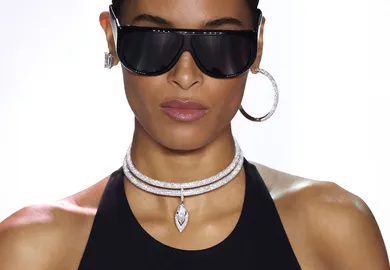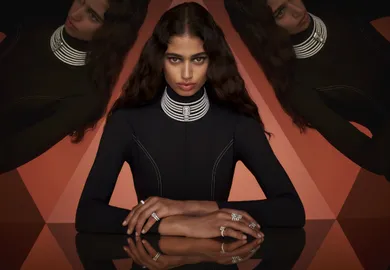
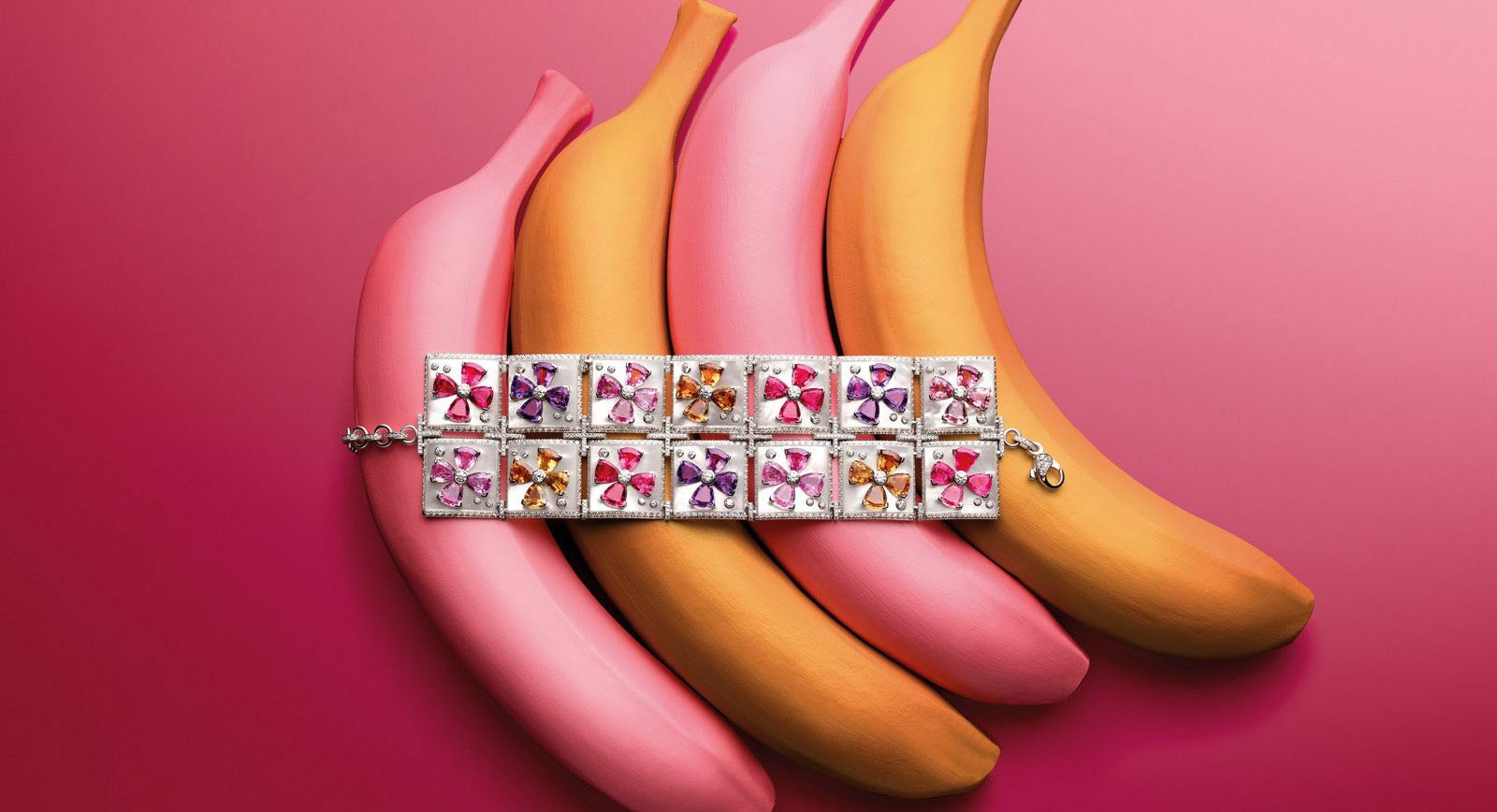
The flower: Floral designs in modern jewellery
A flower is the brightest manifestation of the force of life, an image of its joy. There is a symbolism in flowers which emphasises their connection with the cycle of life and death, resulting in several meanings at once: from life’s transience and the brevity of existence to beauty, perfection, innocence and youth. Some aspects of their depiction relate to their aroma, others to their shape and colour, especially when it comes to flowers in jewellery…
Flora never ceases to inspire jewellers to create masterpieces, whether it be entire collections of high jewellery dedicated to flowers (1.5′ by Chanel, ‘Hortensia’ by Chaumet, ‘Dior à Versailles Côté Jardins’ by Dior) or unique limited-edition pieces, the development and realisation of which takes months of work. In addition, almost every jewellery maison has its own flower: Dior and Piaget have the rose, Chanel – the camellia, Chaumet – the hydrangea, Van Cleef&Arpels – a quatrefoil, and Tiffany & Co. abstract paper flowers from the namesake collection.
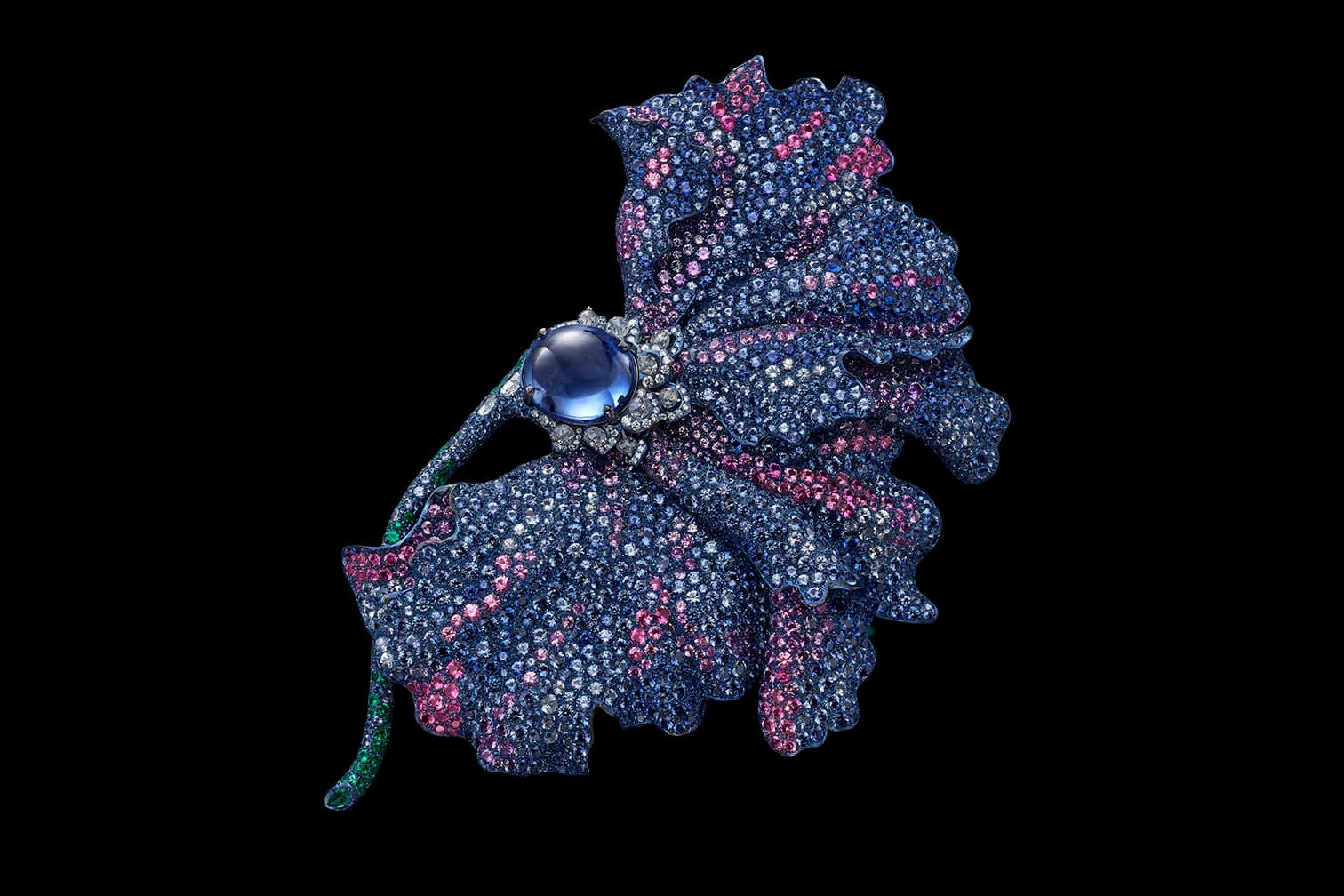
Carnet brooch with an unheated oval blue sapphire cabochon, pink, purple and blue sapphires, emeralds and diamonds set in titanum and 18K white gold
It is interesting how, over time, designers have changed their opinions on the shape and colour of jewellery flowers. Even if most floral designs represented real flowers to a literal degree until the mid-20th century, they then started taking on abstract and fantasy forms. Instead of traditional roses, violets, chrysanthemums, carnations or daisies, designers began to introduce various versions of orchids, lilies, hibiscus flowers and other more exotic plants, even those that do not exactly exist in nature.
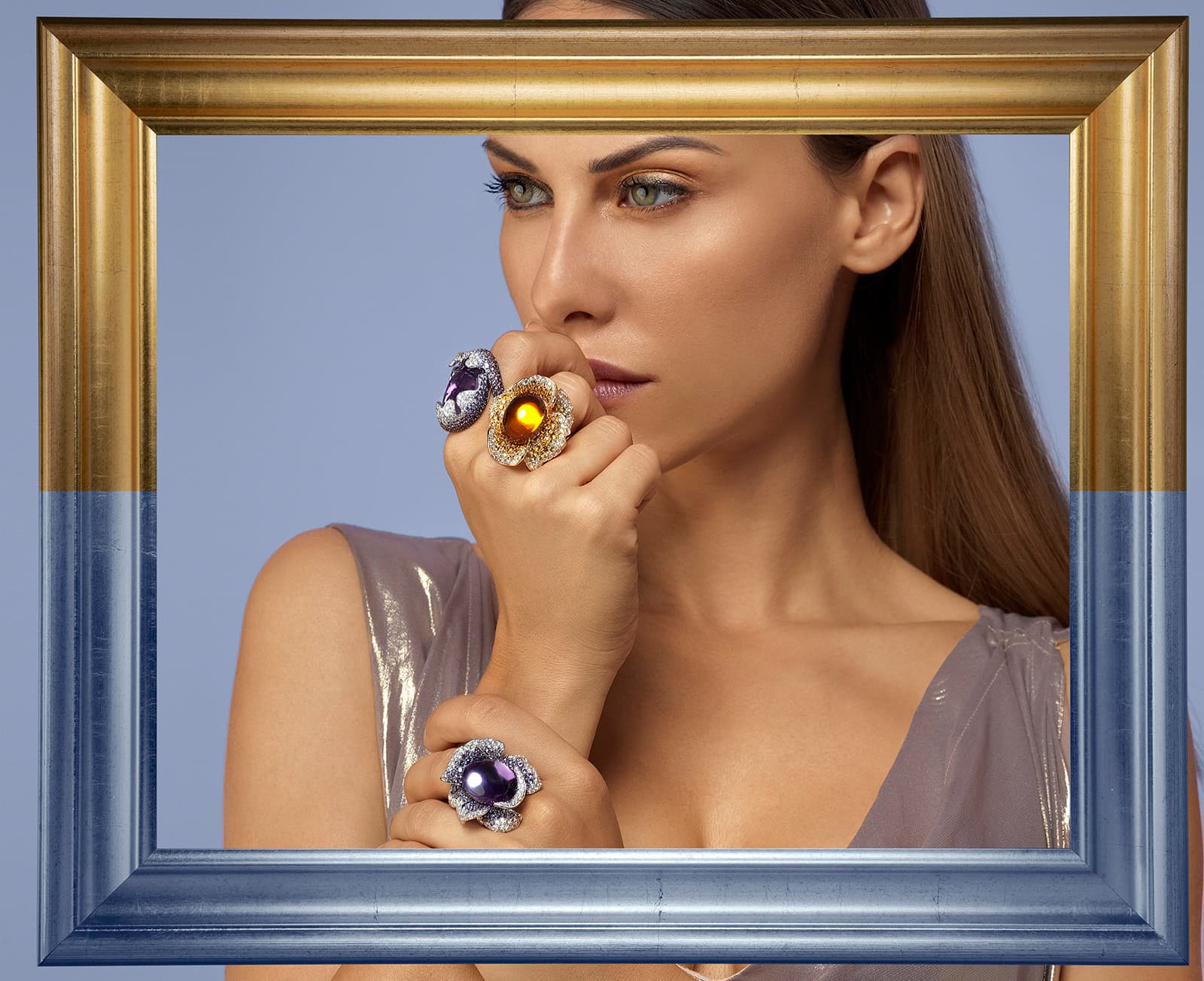
Palmiero flower cocktail rings
Flowers can charm anyone with their rich range of colours and smooth transitions from one shade to another. Yet jewellery brands back in the day were quite economical in their use of colour, decorating their flowers with either stones of the same colour, most often diamonds, or two or three shades in one piece, and would almost never go beyond that. Nowadays, jewellery renditions of flowers are becoming more common with a whole riot of colours, such as in the Alessio Boschi ‘Rose de France’ set dedicated to Marie Antoinette. The Italian designer has mixed blue, pink, orange, purple and raspberry spinels with Paraiba tourmalines and diamonds to create his vibrant precious jewel.
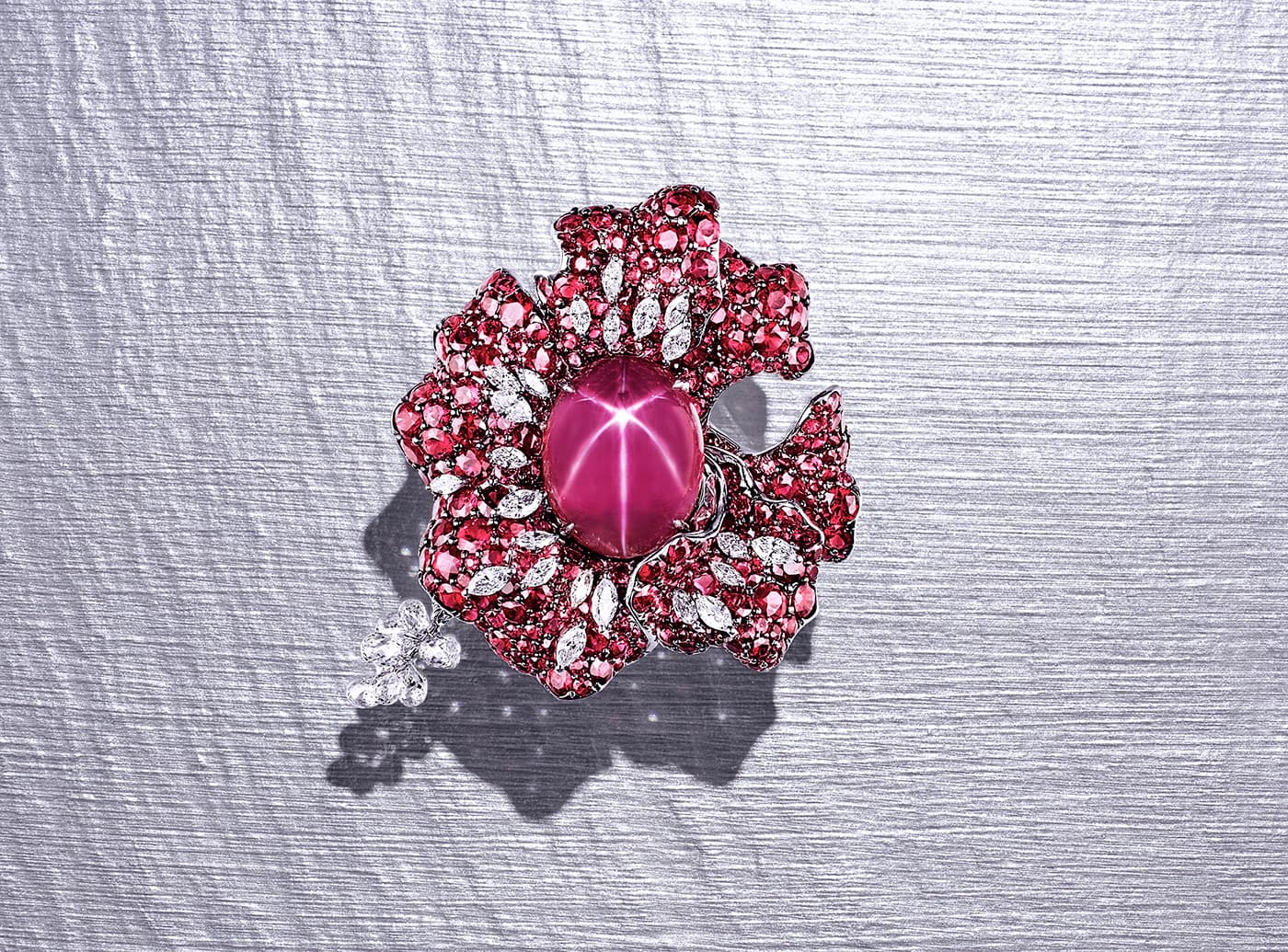
Feng J 'Amour Code' ring with an oval star ruby, rubies and diamonds
A new metal in jewellery – titanium – has allowed designers to create large voluminous pieces which are light enough to wear. Jewellers such as the legendary JAR, Cindy Chao, Michelle Ong, Glenn Spiro, Margherita Burgener and other private art jewellers have taken advantage of this. They either encrust titanium with precious stones, or enrich it in with some striking colour or leave it without gem embellishment, only giving shape to the petals.
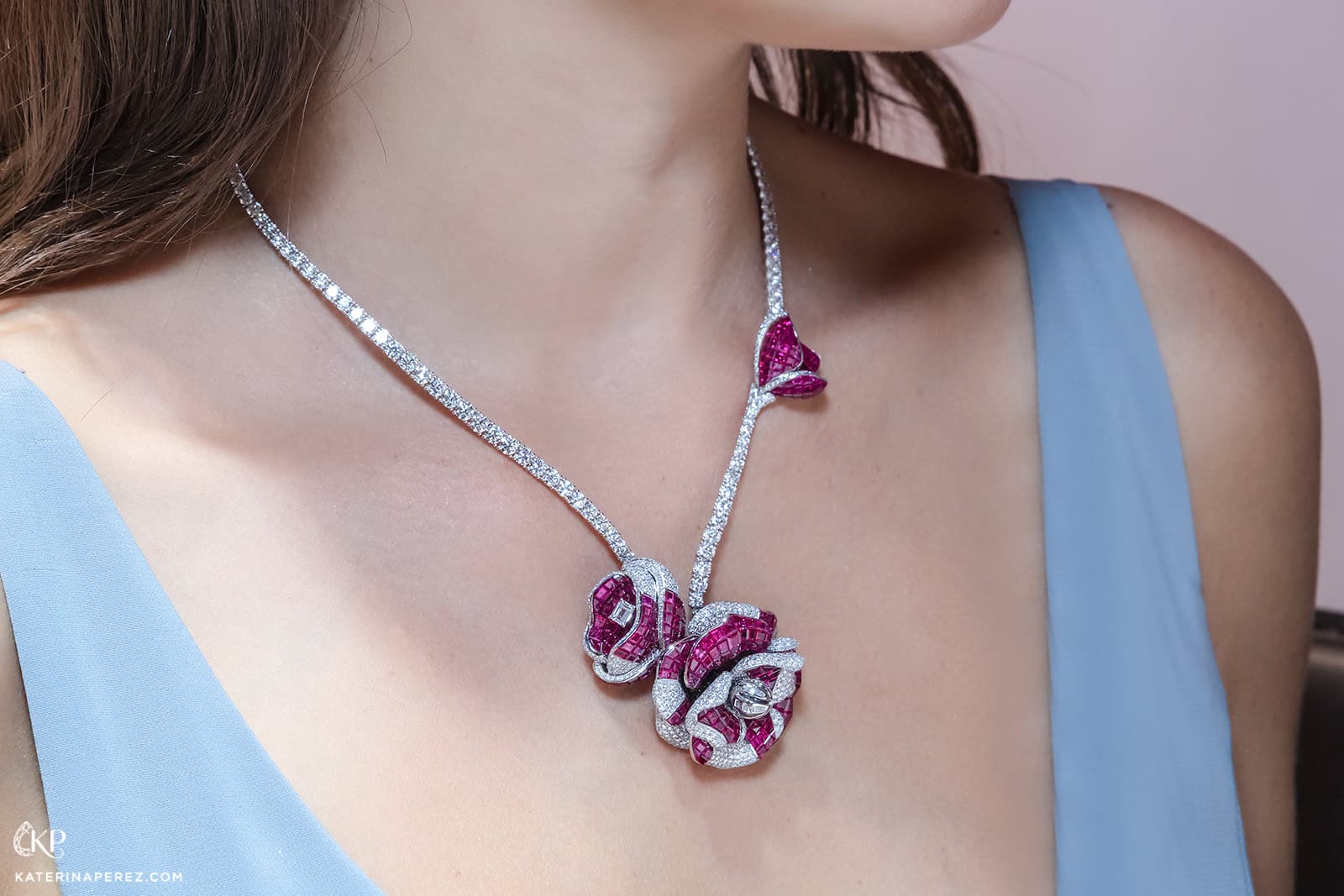
Stenzhorn high jewellery flower necklace with invisible set rubies and diamonds
Another metal that I do not wish to ignore is aluminium: it, like titanium, can also be painted in desired shades and at the same time, is more malleable and therefore easier to fashion. Aluminum is truly appreciated by the Hemmerle family, who put together a whole completely unique collection: ‘The [Al Project]’, including a brooch and about seven different aluminium earrings embellished with precious gemstones.
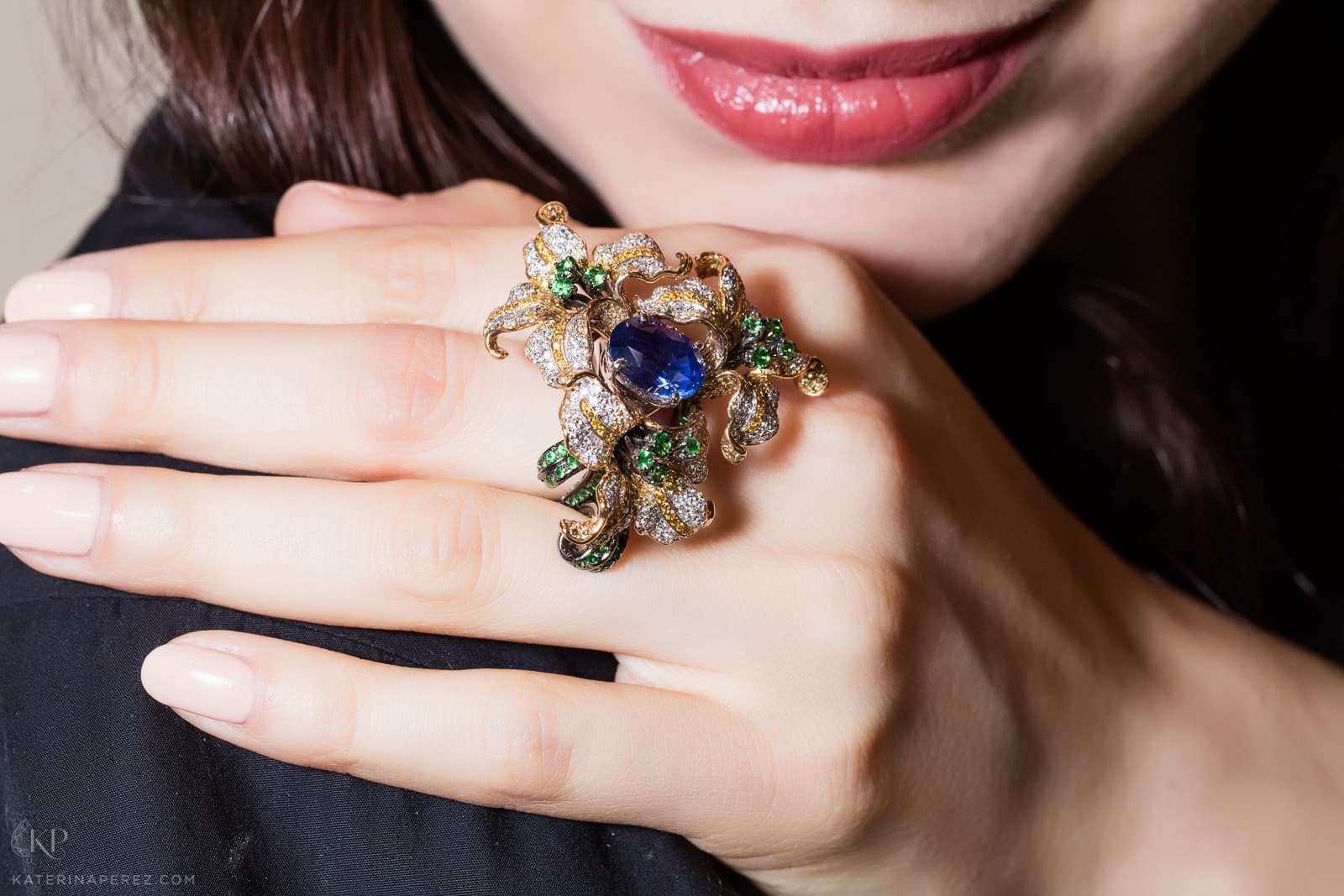
Caratell flower ring with an oval sapphire, tsavorires and diamonds
Those who regularly read my articles probably recall the latest invention of Boucheron: an innovative technique of placing natural flower petals on metal to achieve a realistic effect. It was co-invented by florist Claire Boucl to create 9 rings for the ‘Nature Triomphante’ high-end jewellery collection. Together with the brand’s jewellers, the florist scanned and stabilised the delicate buds of anemones, violets, hydrangeas and peonies without using pigments or chemical components to preserve the natural shades created by nature. Then the petals were carefully placed on the titanium so as not to damage their delicate texture.
As you see, jewellery art does not stand still. It constantly opens up new opportunities for jewellers, thanks to which they continue to amaze us with real masterpieces of precious flora.
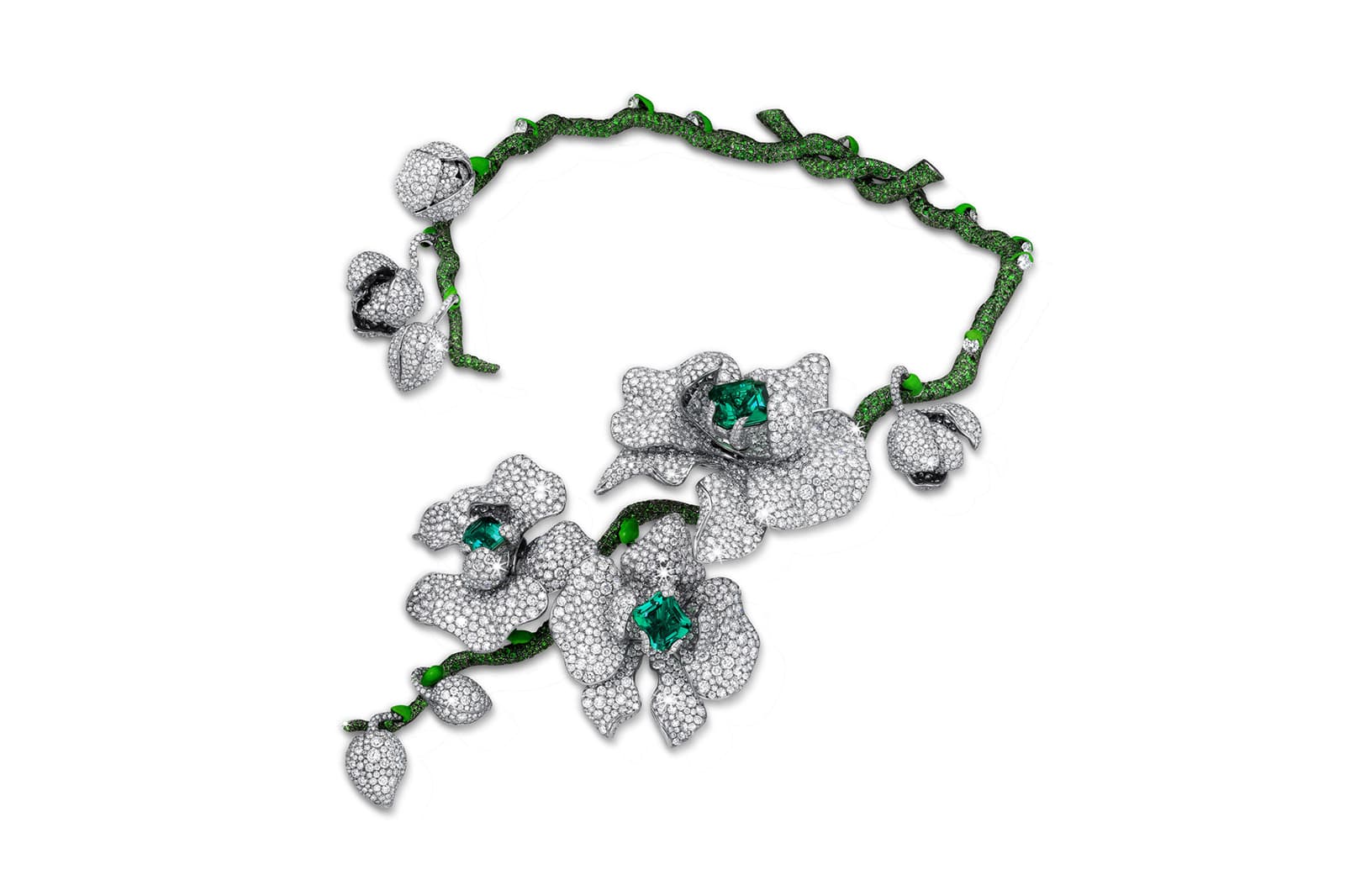
Diana Zhang
Diana Zhang
'Orchid King' necklace with emerald, diamond, tsavorite and enamel
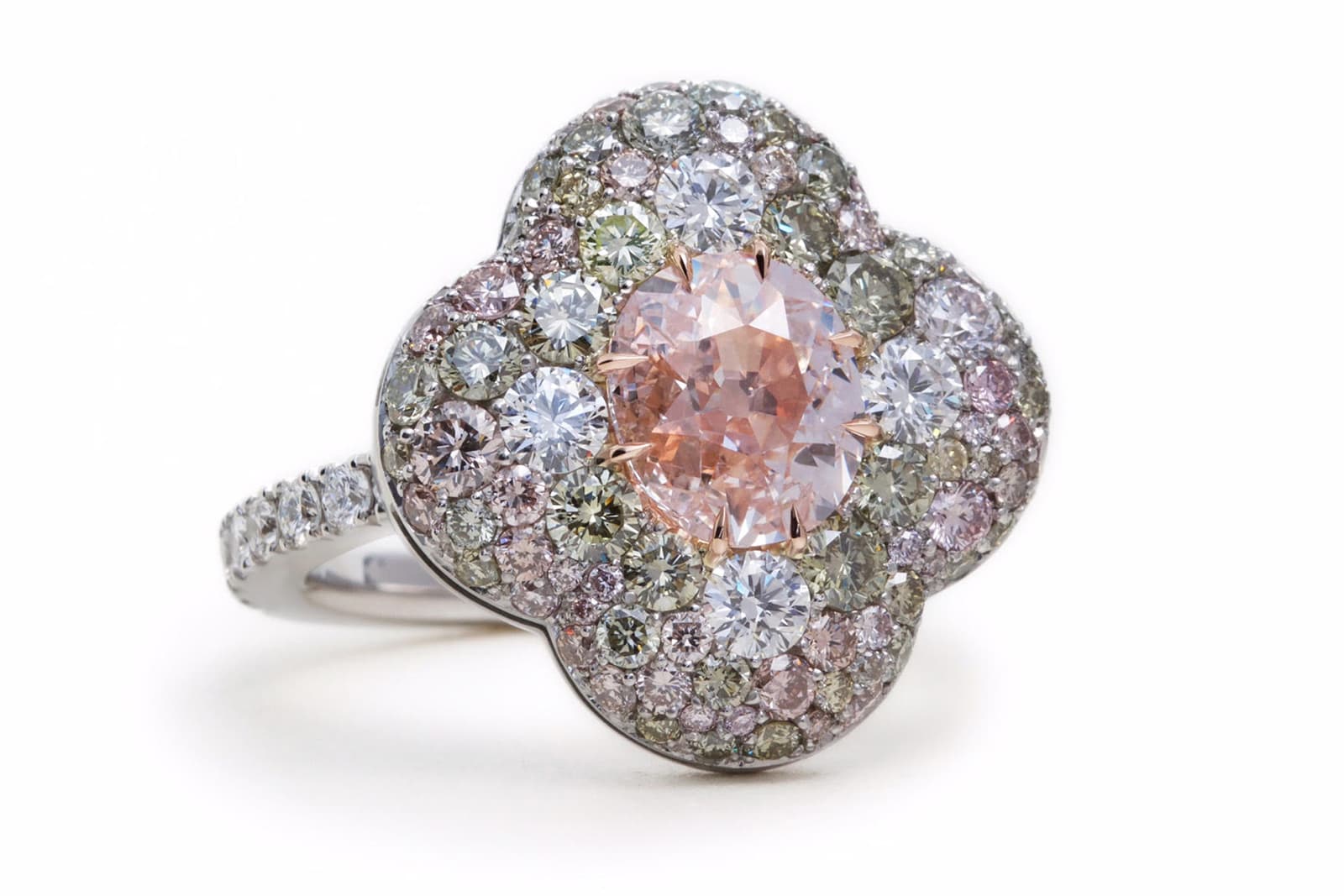
David Michael
David Michael
Ring with central antique pink diamond, blue, green, pink and colourless diamonds
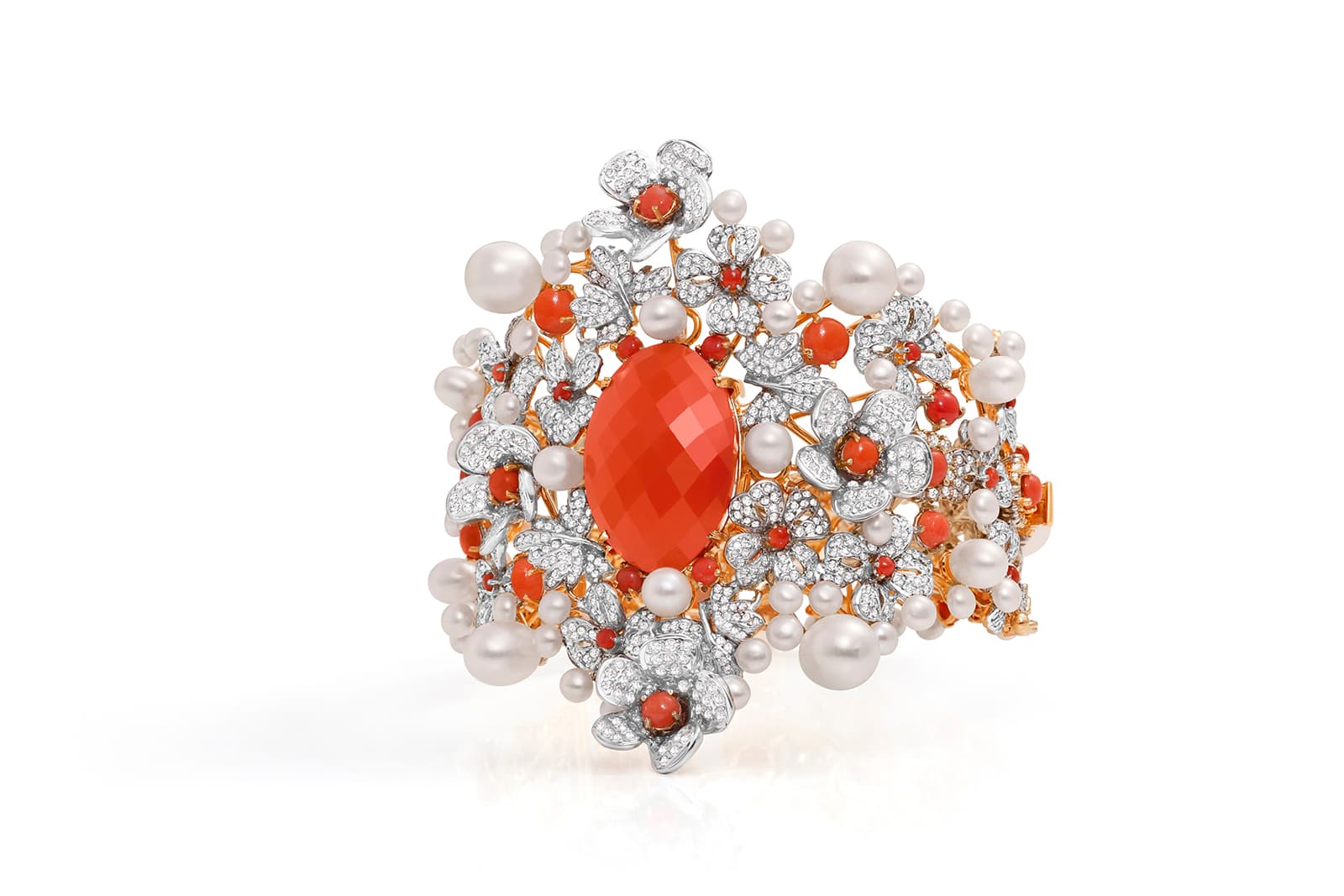
Gold Design
Gold Design
Bracelet in coral, carnelian, pearl, and diamond in 18k yellow gold
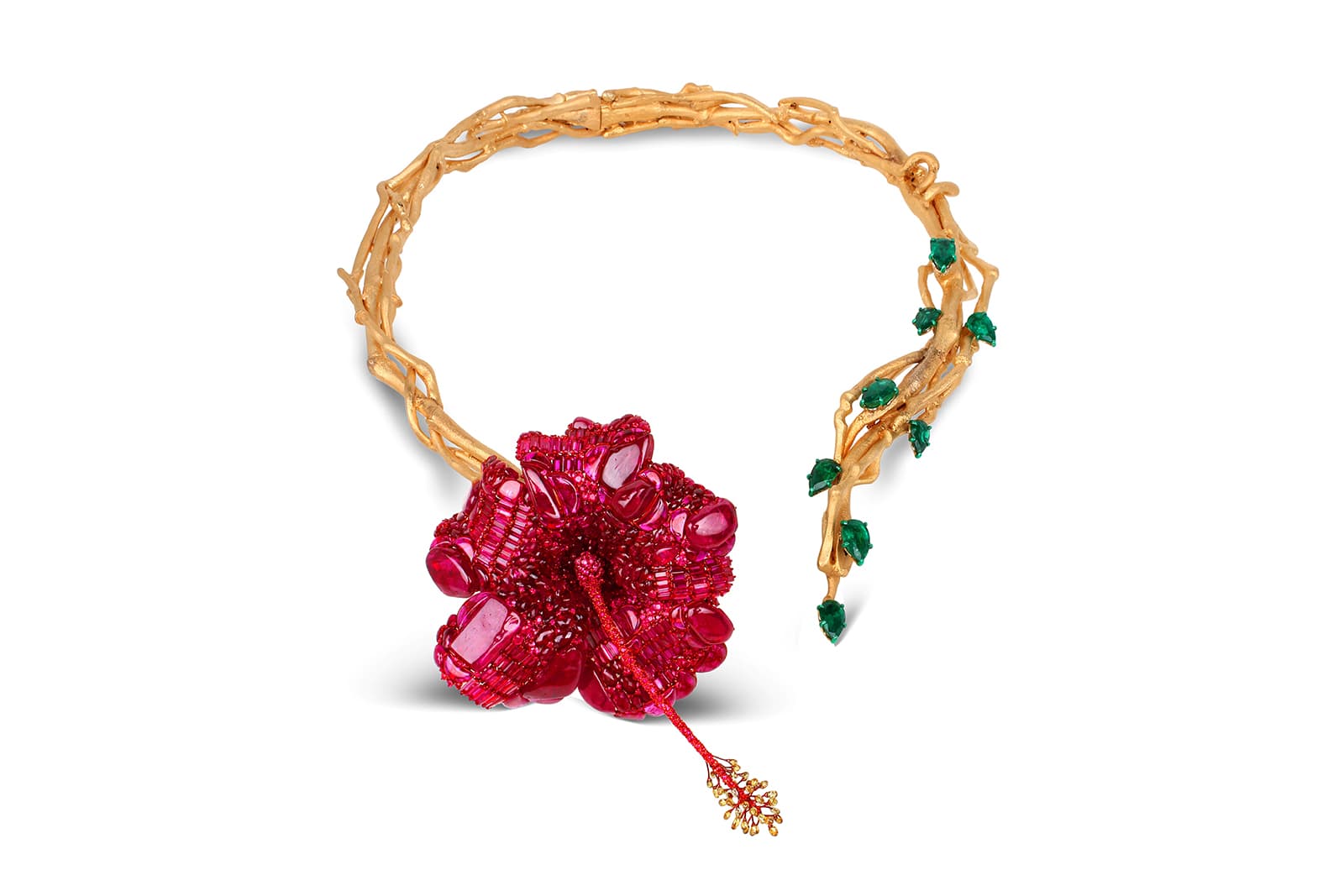
Bina Goenka
Bina Goenka
‘Hibiscus’ necklace for Sotheby's 'In Bloom' exhibition with Mozambique ruby, colourless and yellow diamond, and Zambian emerald
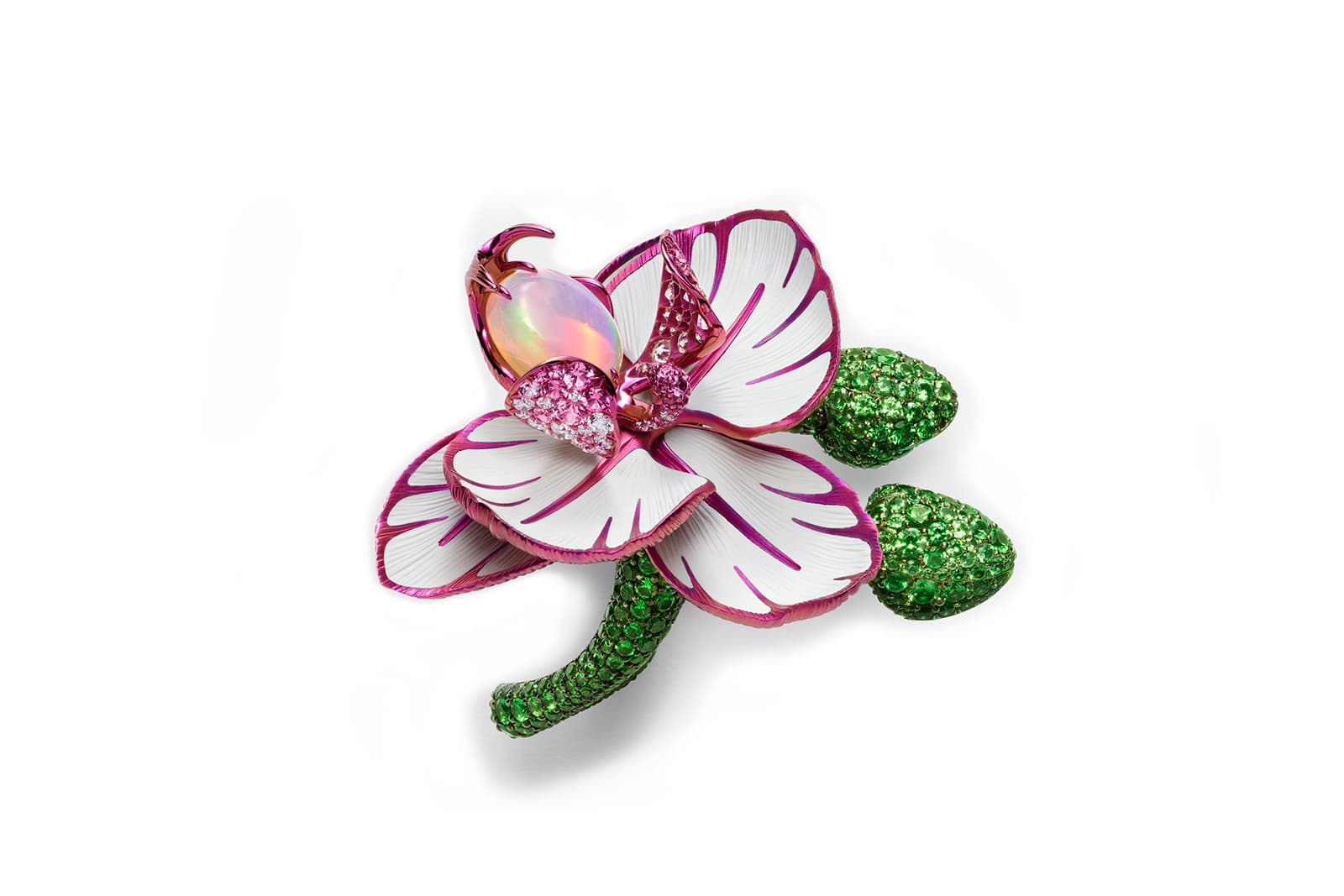
Chopard
Chopard
'Orchid' earrings from the 'Red Carpet 2019' collection with opal, tsavorite, pink sapphire, and diamond in ceramic and titanium
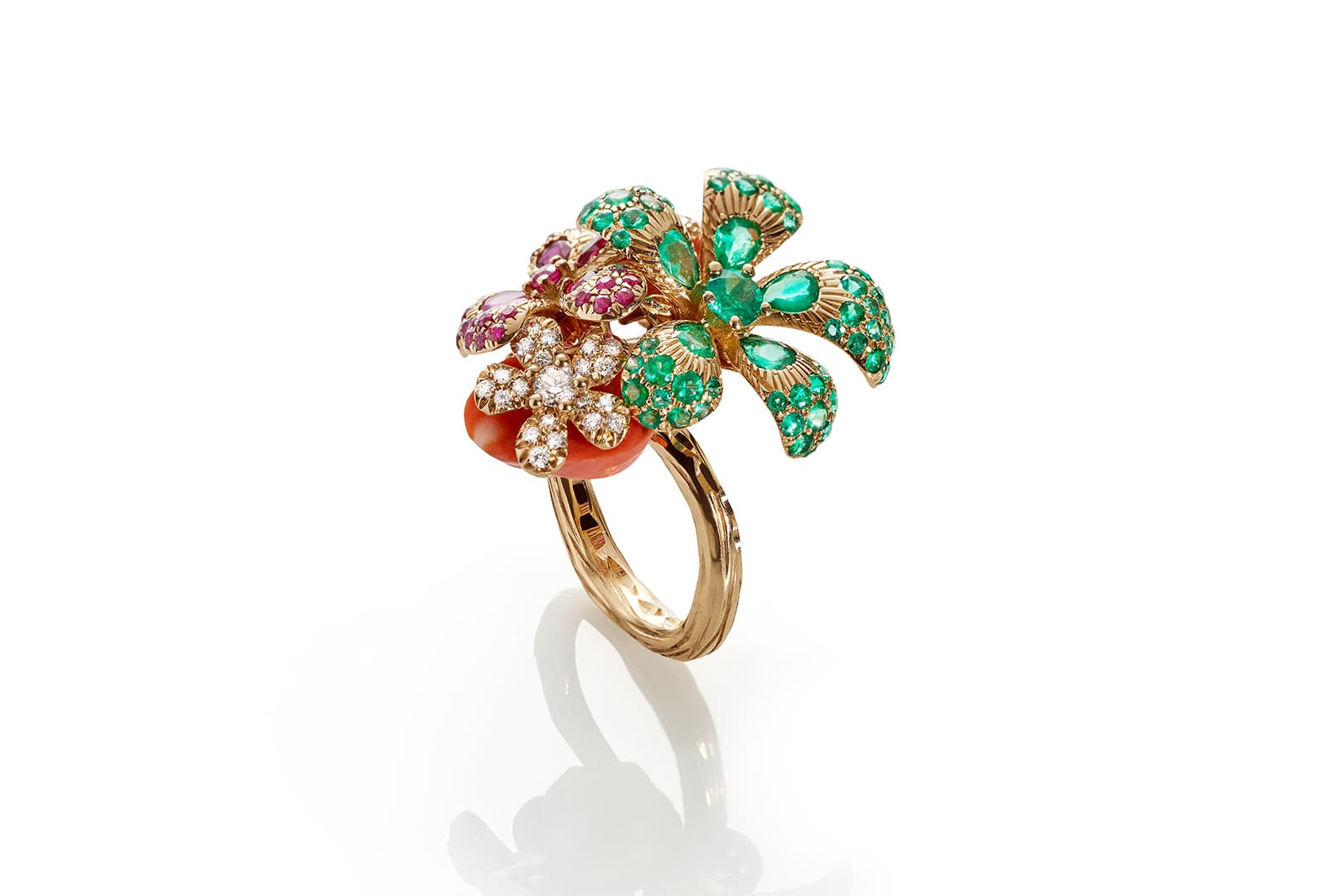
Chantecler
Chantecler
'Flowers on Coral' ring with emerald, ruby, diamond and coral in 18k yellow gold
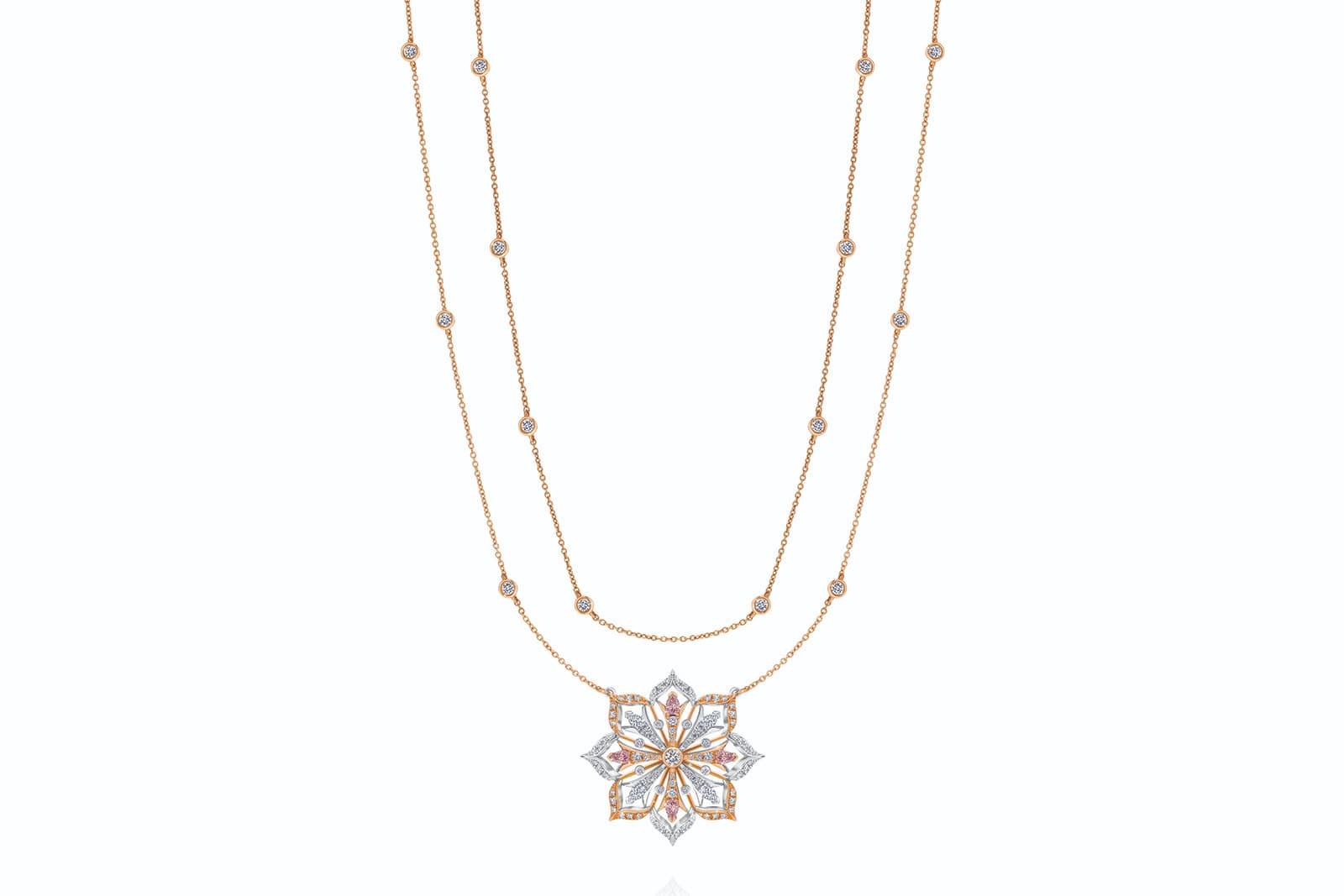
Calleija
Calleija
Necklace with Argyle pink diamond and colourless diamond in 18k yellow and white gold
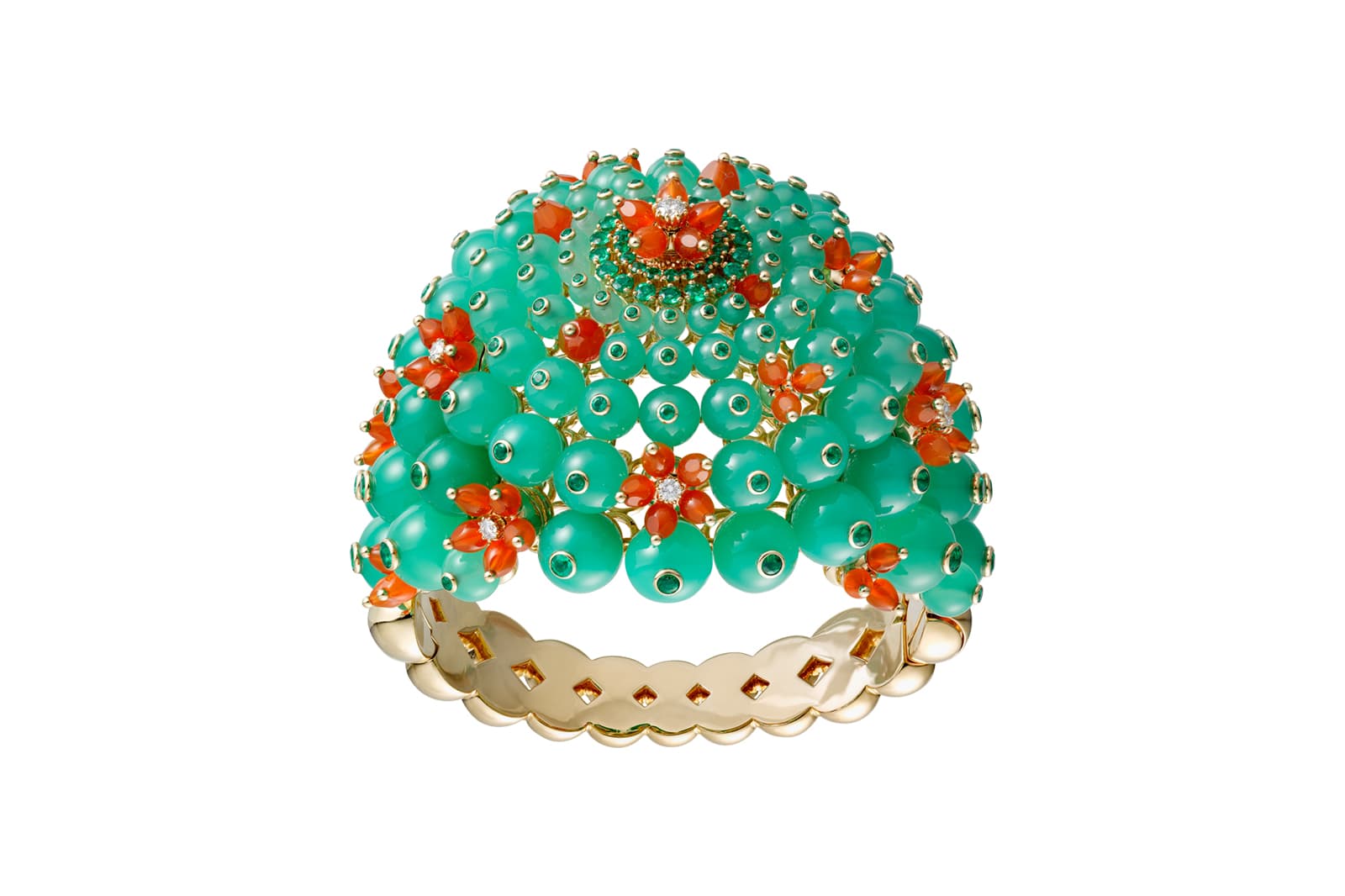
Cartier
Cartier
'Cactus de Cartier' cuff with chrysoprase, emerald, diamond and carnelian in 18k yellow gold
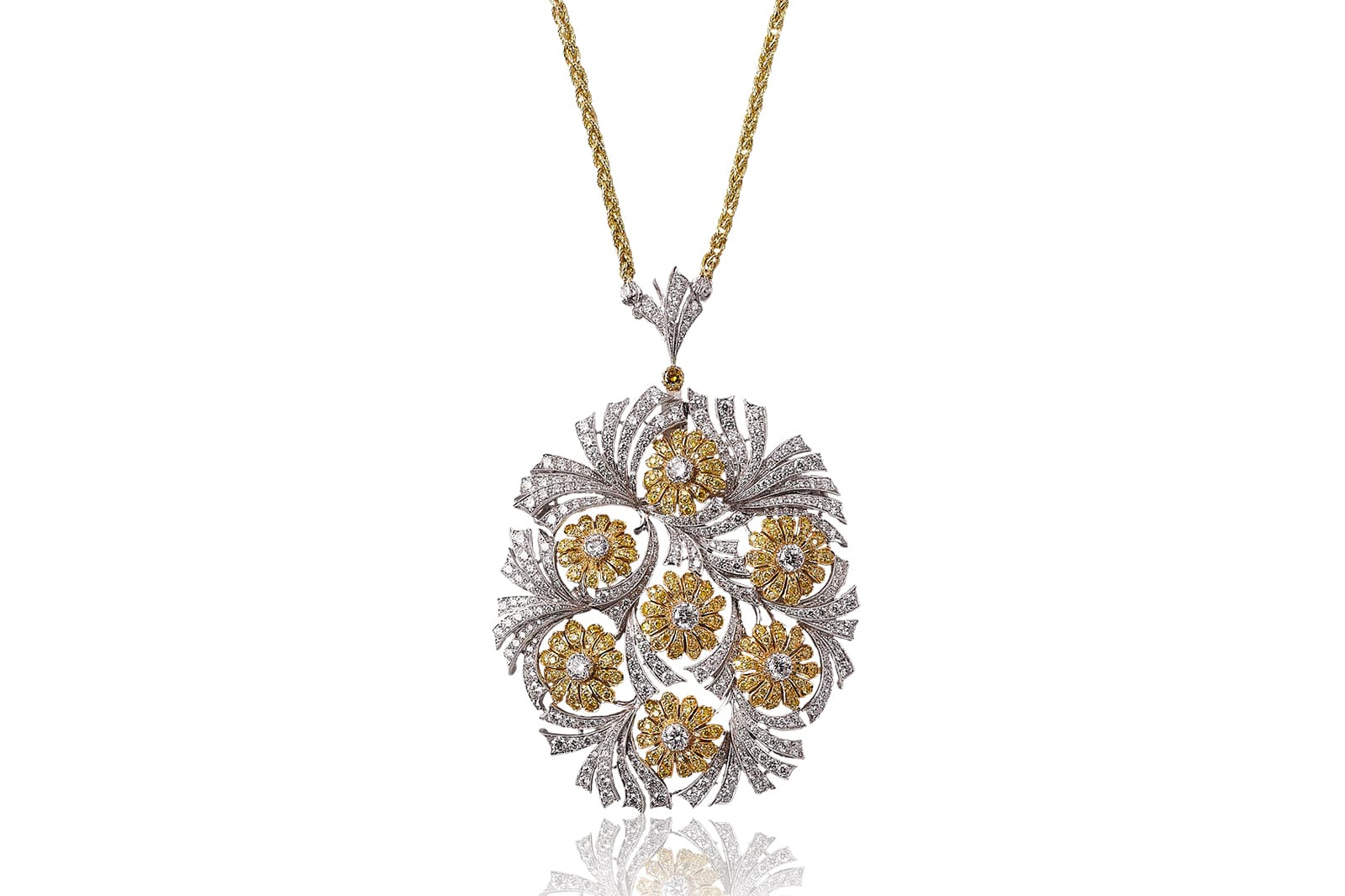
Buccellati
Buccellati
'Two Vases of Flowers' pendant necklace with diamond in 18k yellow and white gold
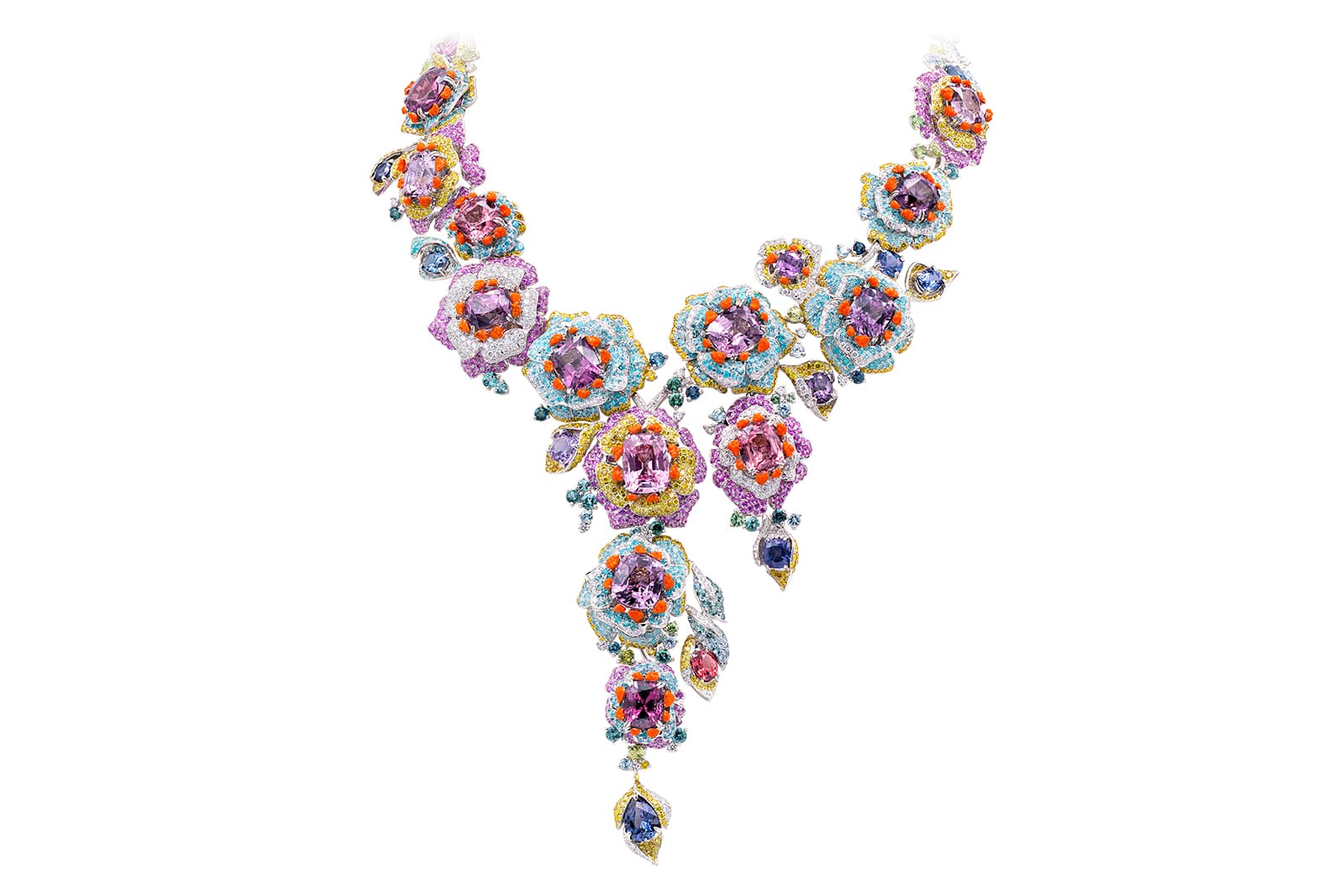
Alessio Boschi
Alessio Boschi
'Rose de France' transformable necklace with blue, pink, orange, purple and raspberry spinel, Paraiba tourmaline, diamond and enamel
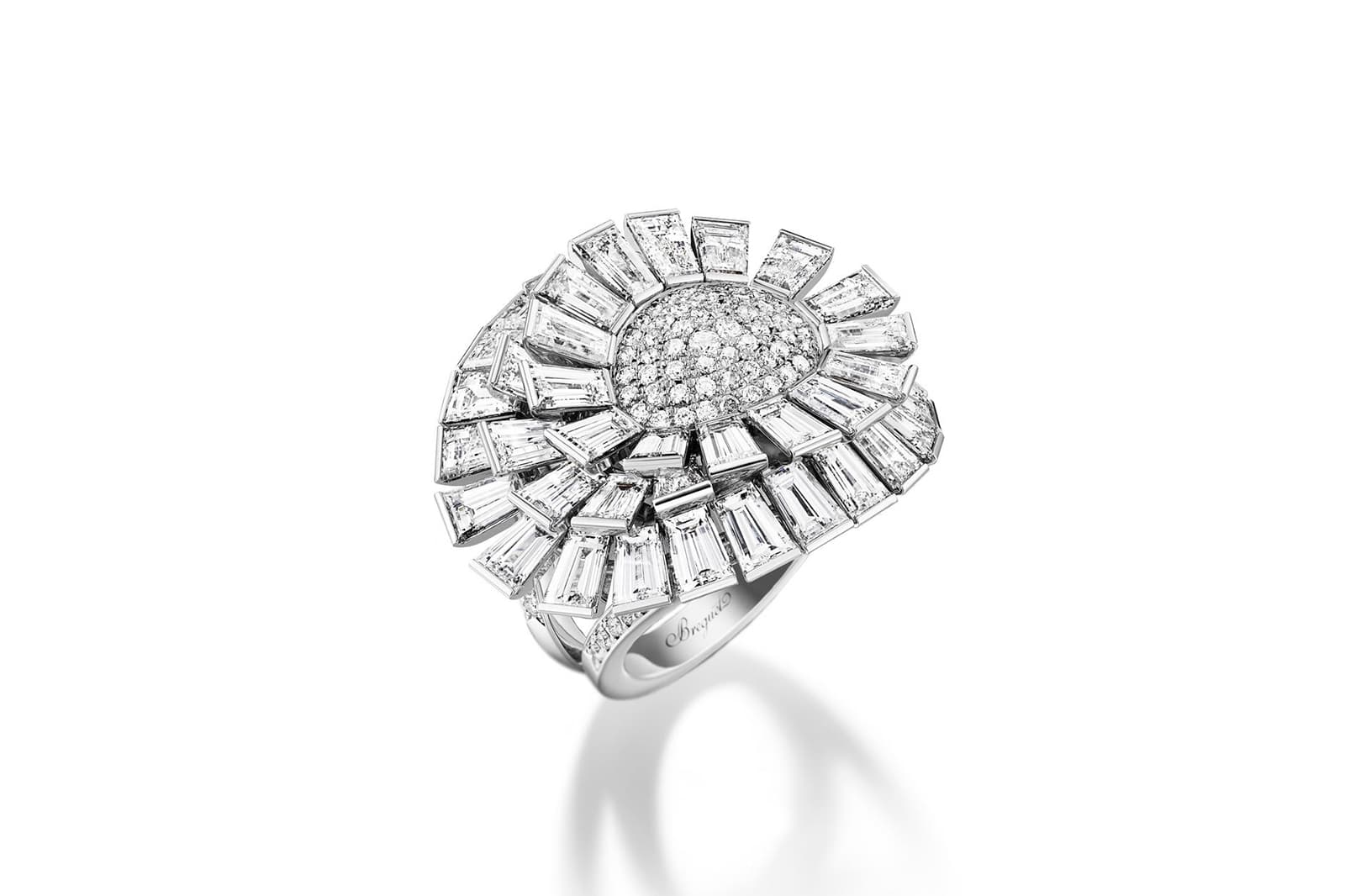
Breguet
Breguet
'Crazy Flower' ring with 12.54 ct diamonds in white gold
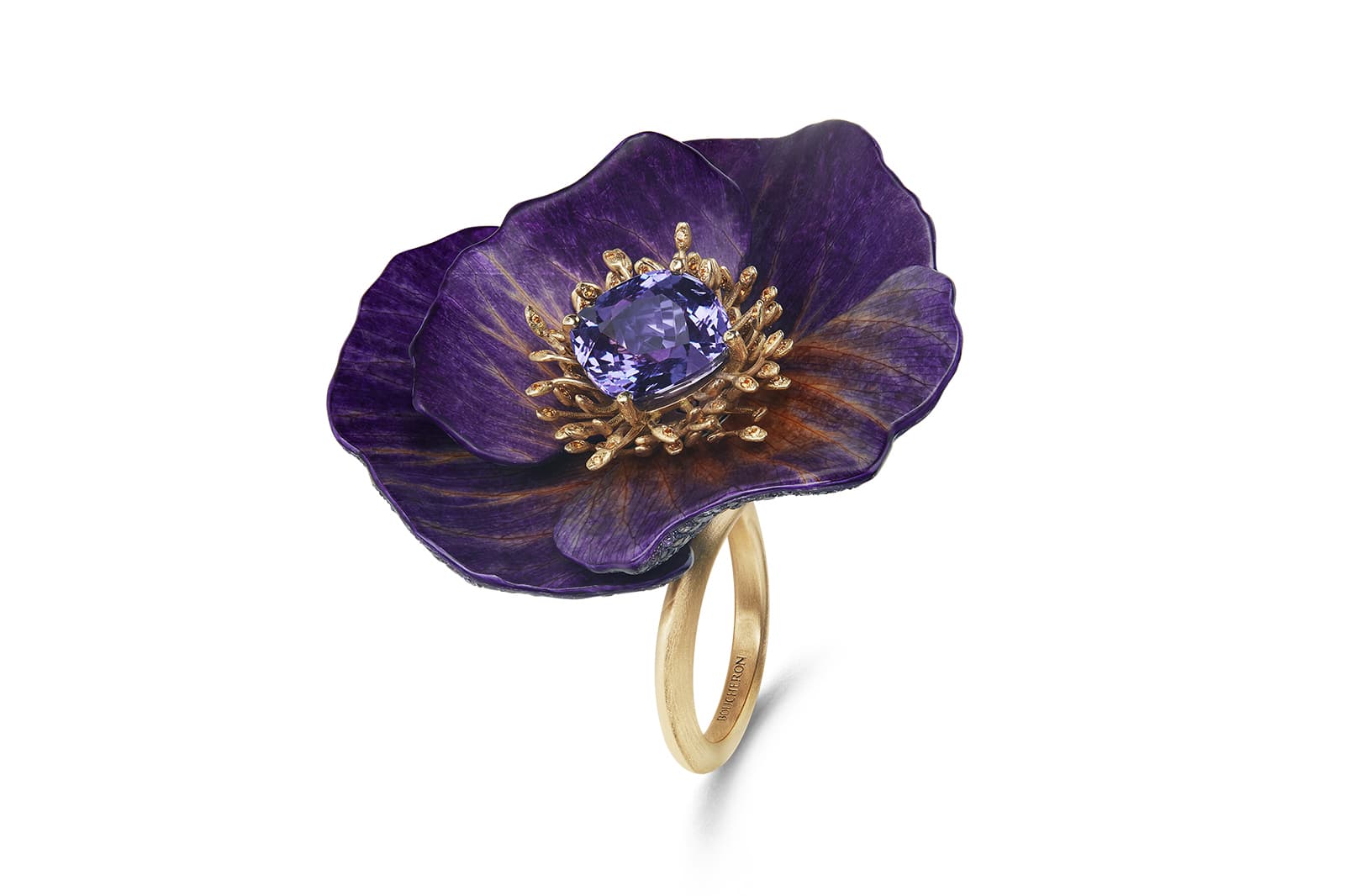
Boucheron
Boucheron
'Anémone Meron Bordeaux' ring from the 'Eternal Flowers' collection with 5.99ct violet sapphire, yellow and blue sapphire in 18k yellow gold
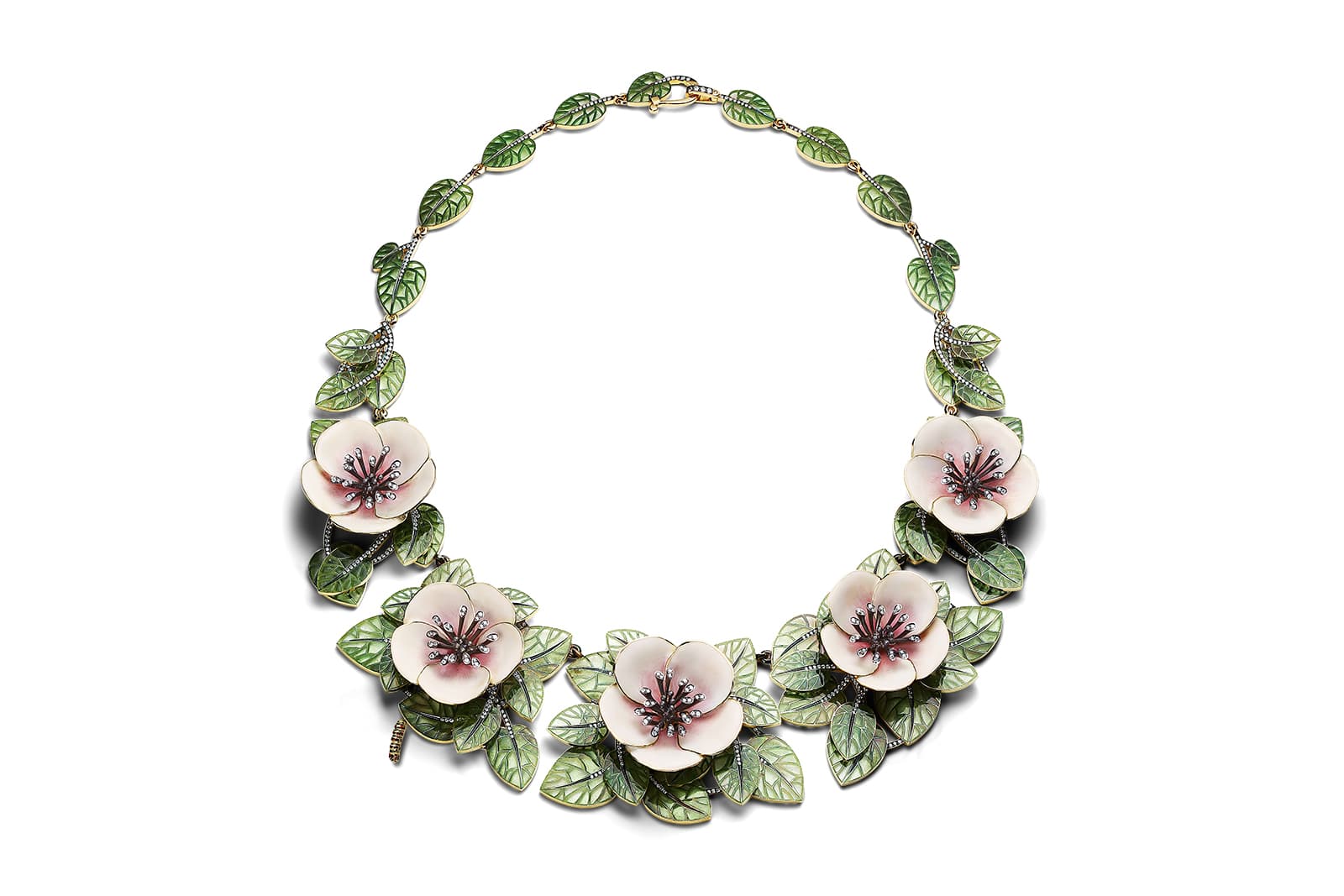
Ilgiz F.
Ilgiz F.
Necklace with vitreous enamel
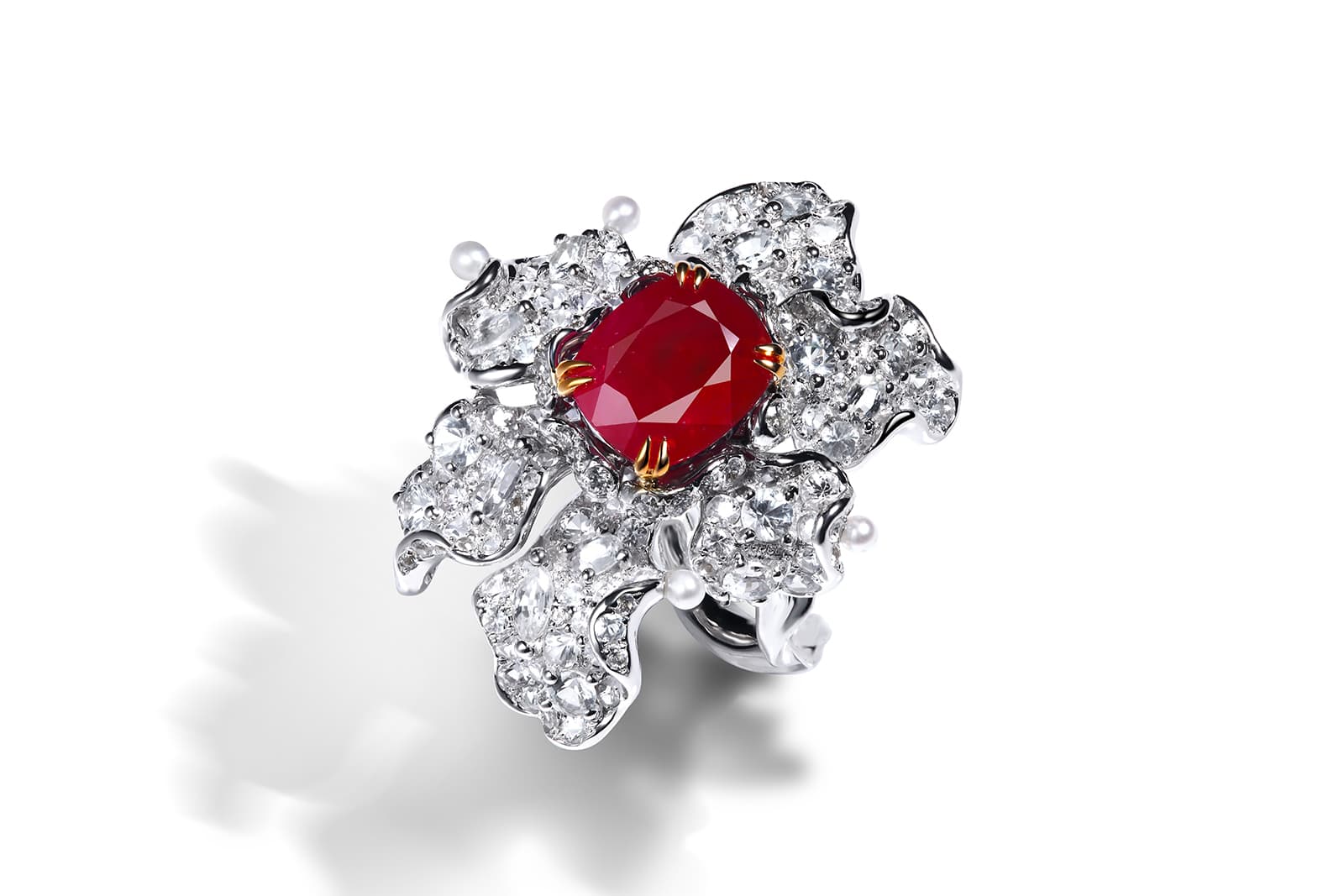
Ciga Long
Ciga Long
Ring with ruby and diamond in 18k white and yellow gold
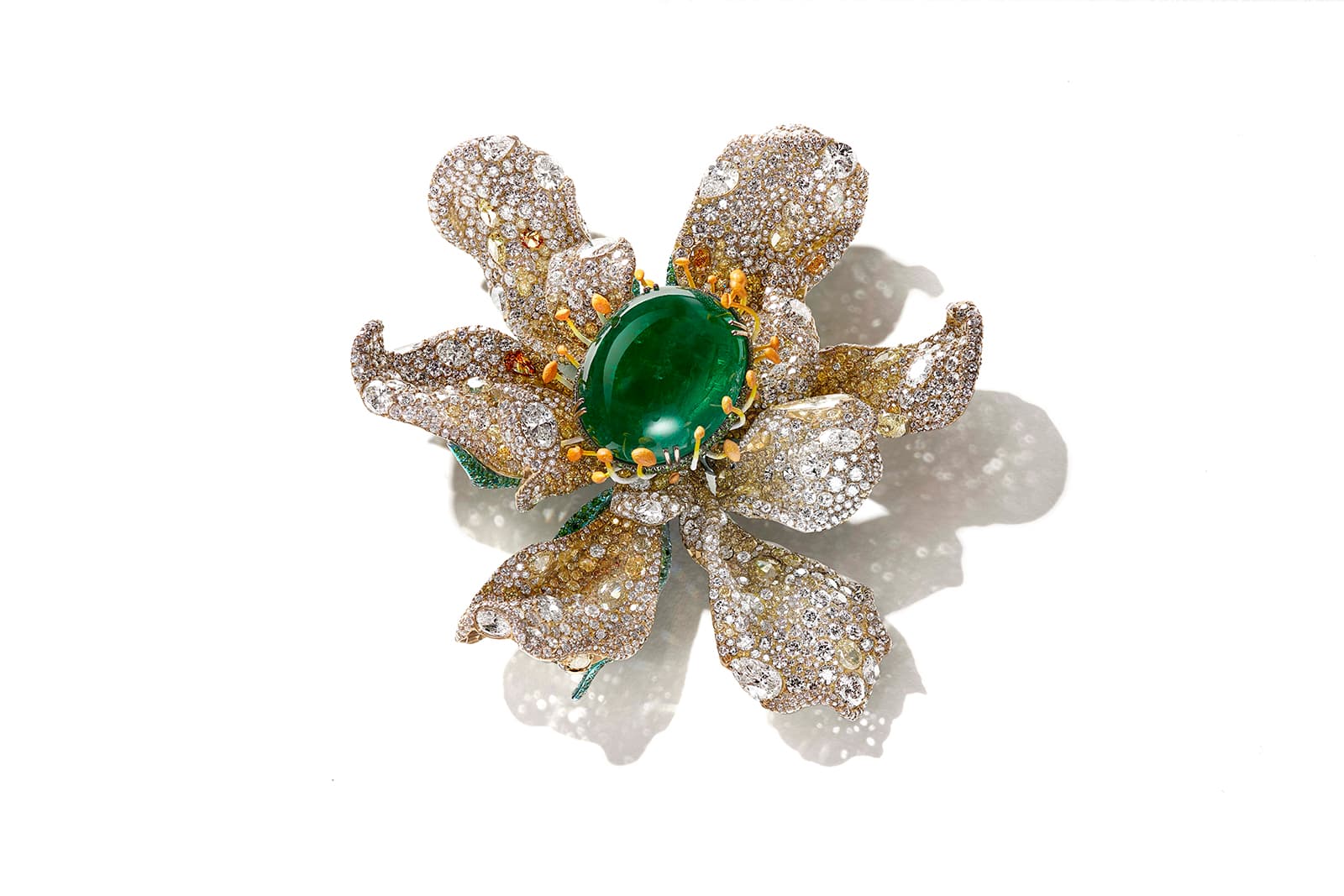
CINDY CHAO
CINDY CHAO
The Art Jewel 2019 Black Label Masterpiece II 'Marguerite' brooch with emerald, yellow and colourless diamond
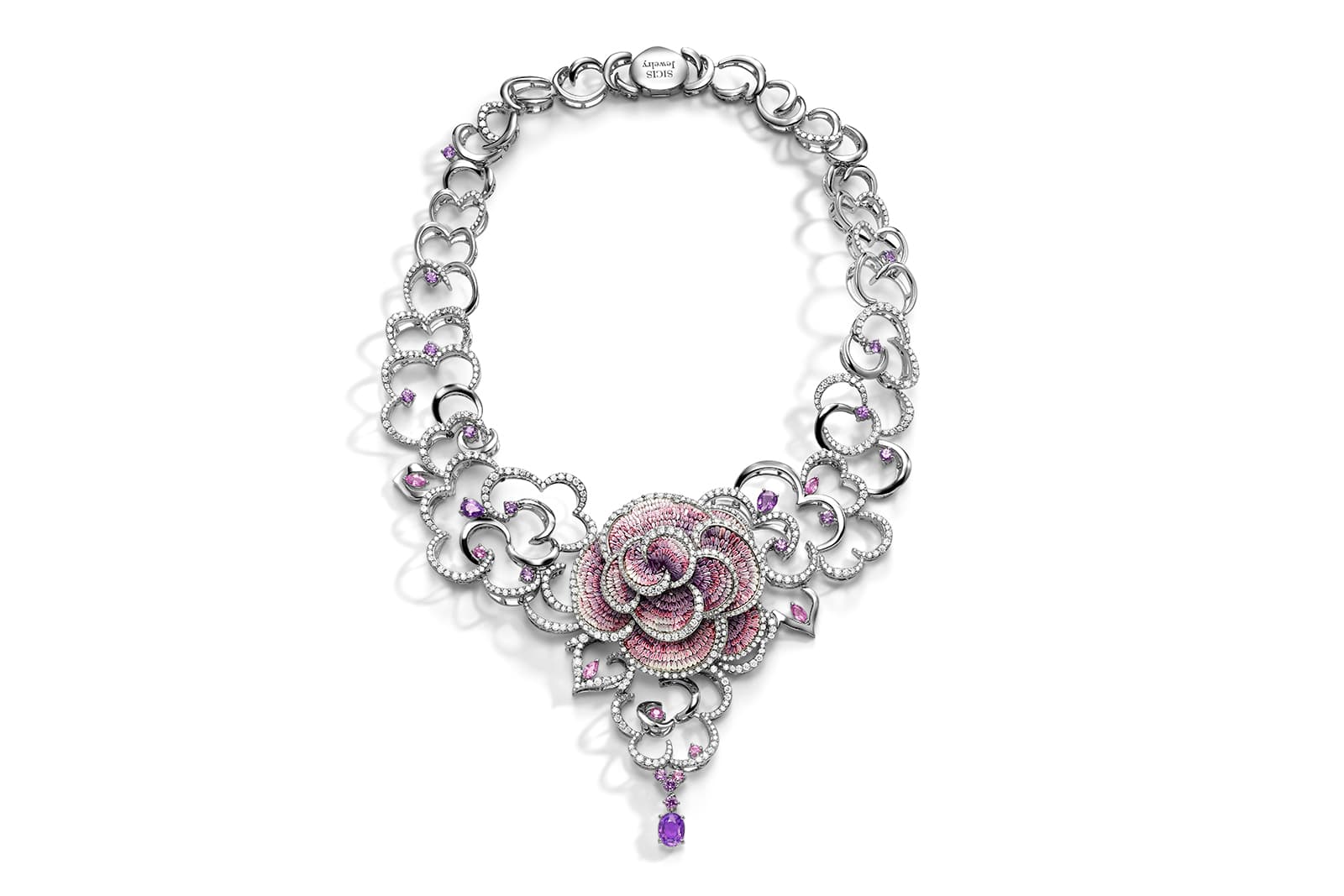
SICIS
SICIS
'Purple Carpet' necklace with micromosaic, purple sapphire and diamond in 18k white gold
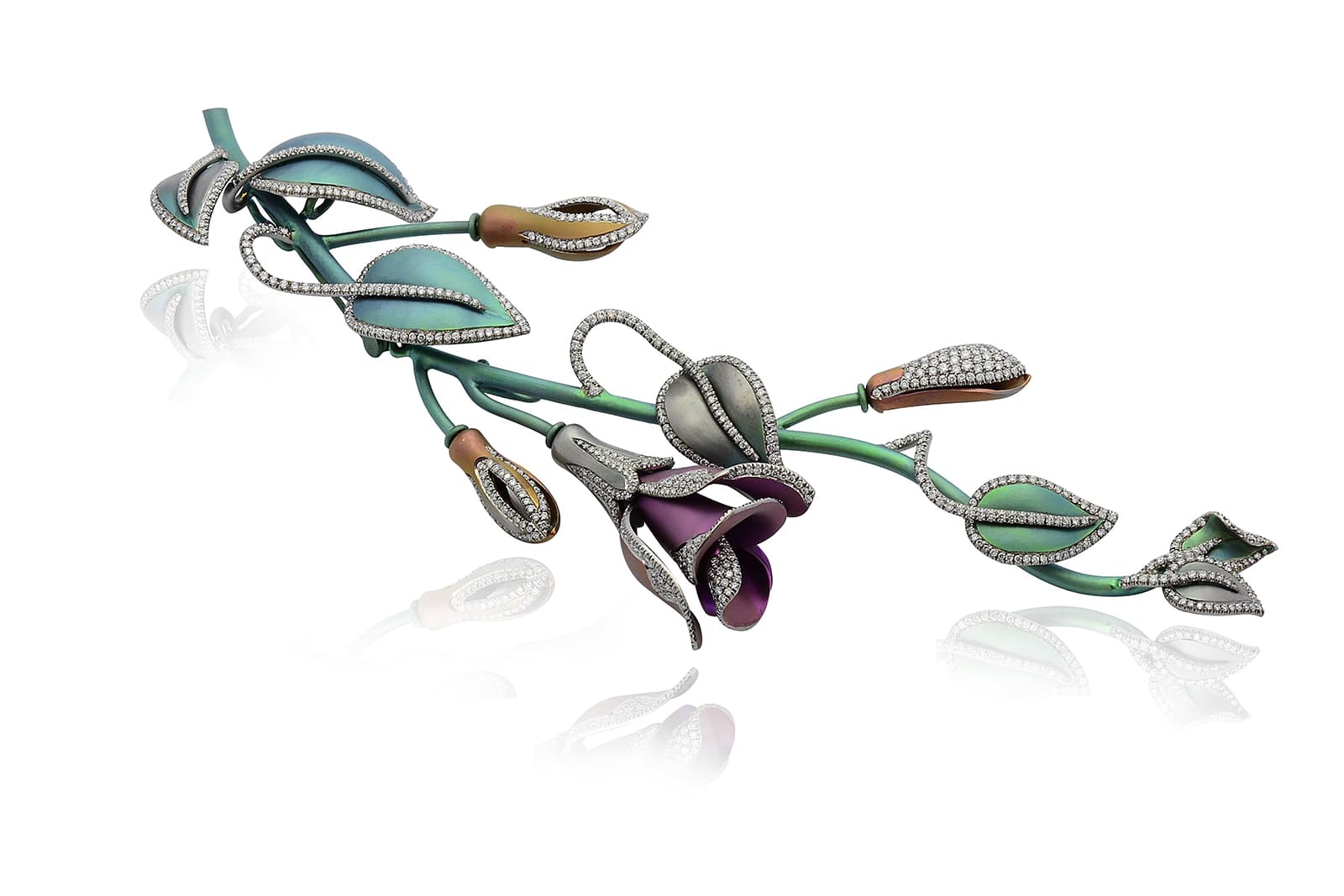
Margherita Burgener
Margherita Burgener
'Blooming' brooch with diamond in titanium

Boucheron
Boucheron
‘Nuage de Fleurs’ necklace with 42.96 carat cushion cut pink tourmaline, mother of pearl and diamond in 18k rose gold
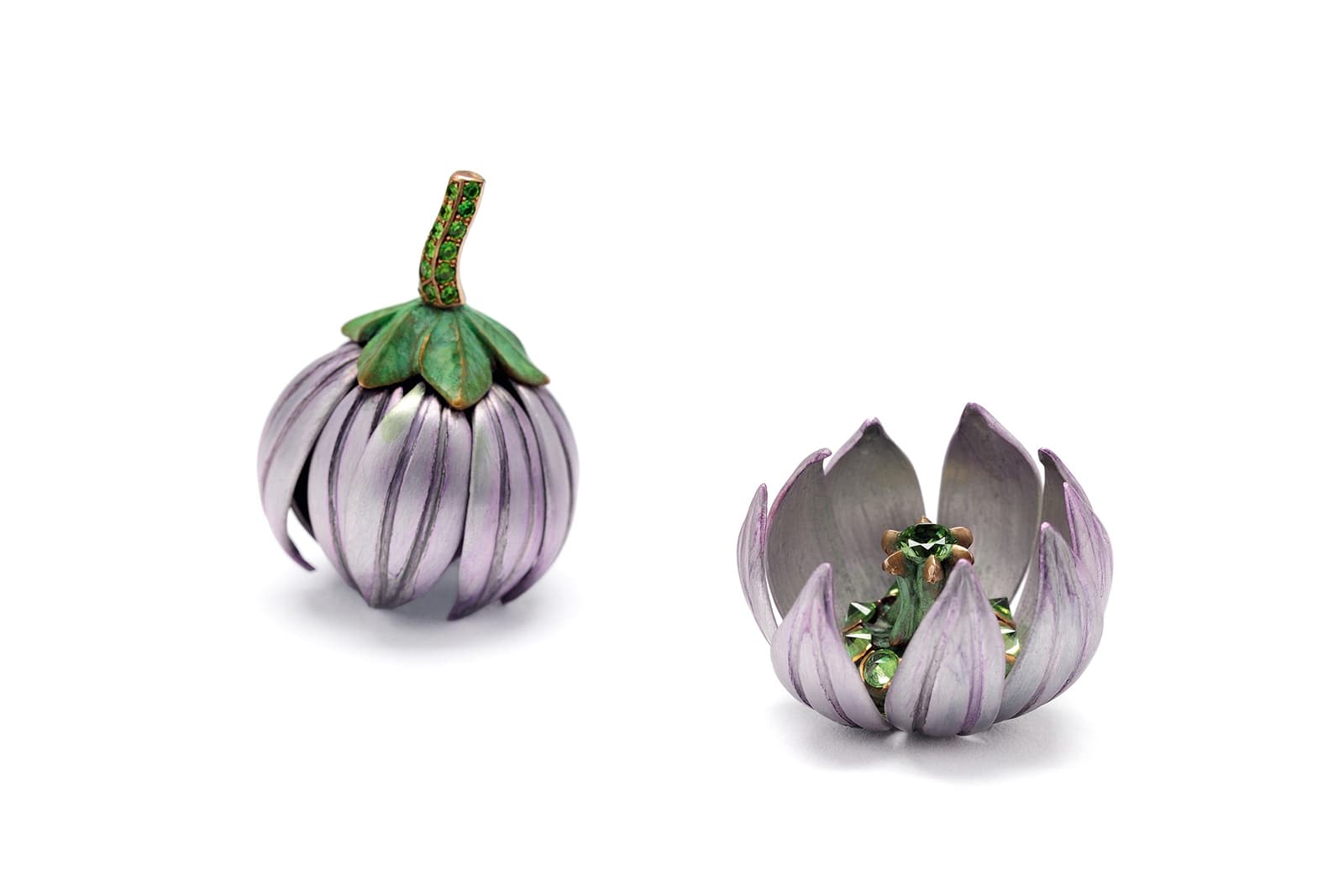
Hemmerle
Hemmerle
'The [Al] Project' earrings with demantoid garnet in aluminium, bronze and gold
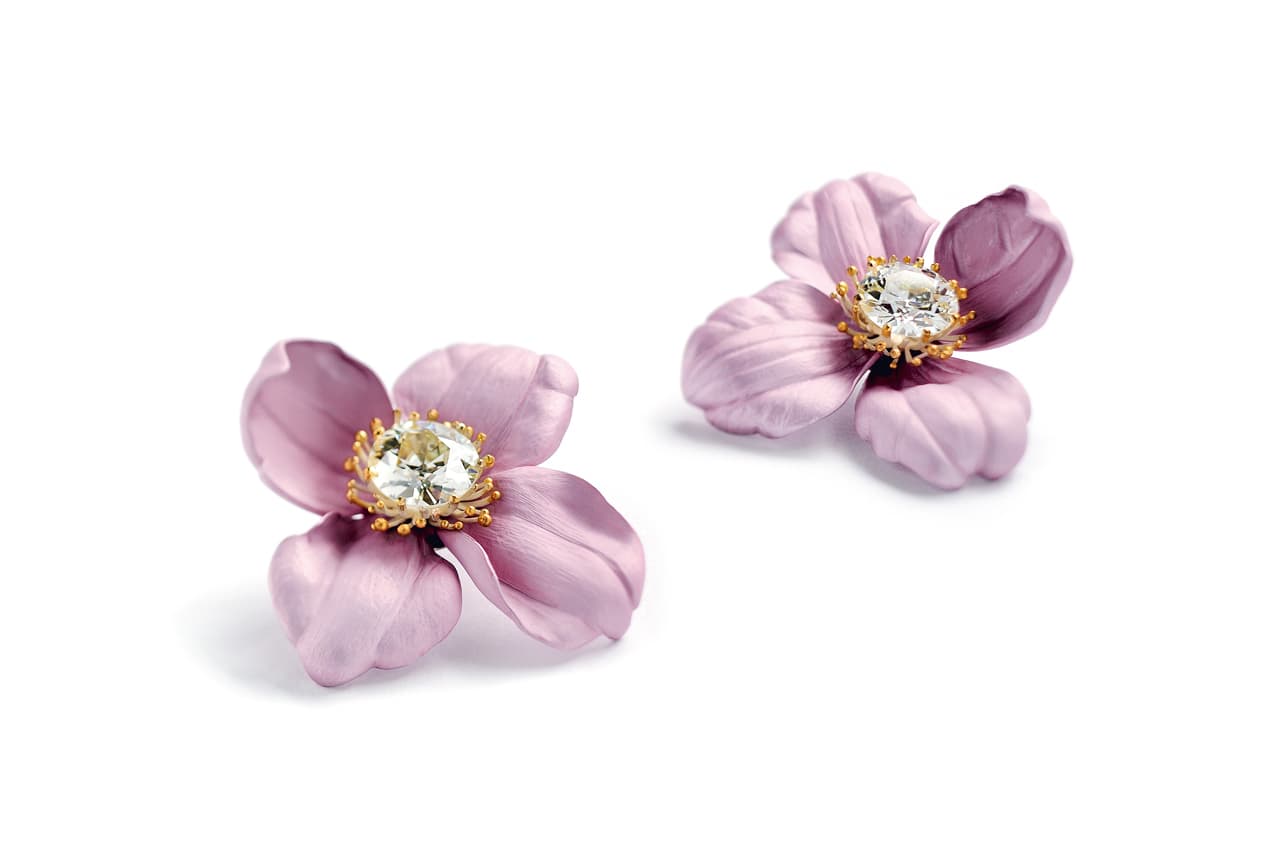
Hemmerle
Hemmerle
'The [Al] Project' earrings with diamond in aluminium and gold
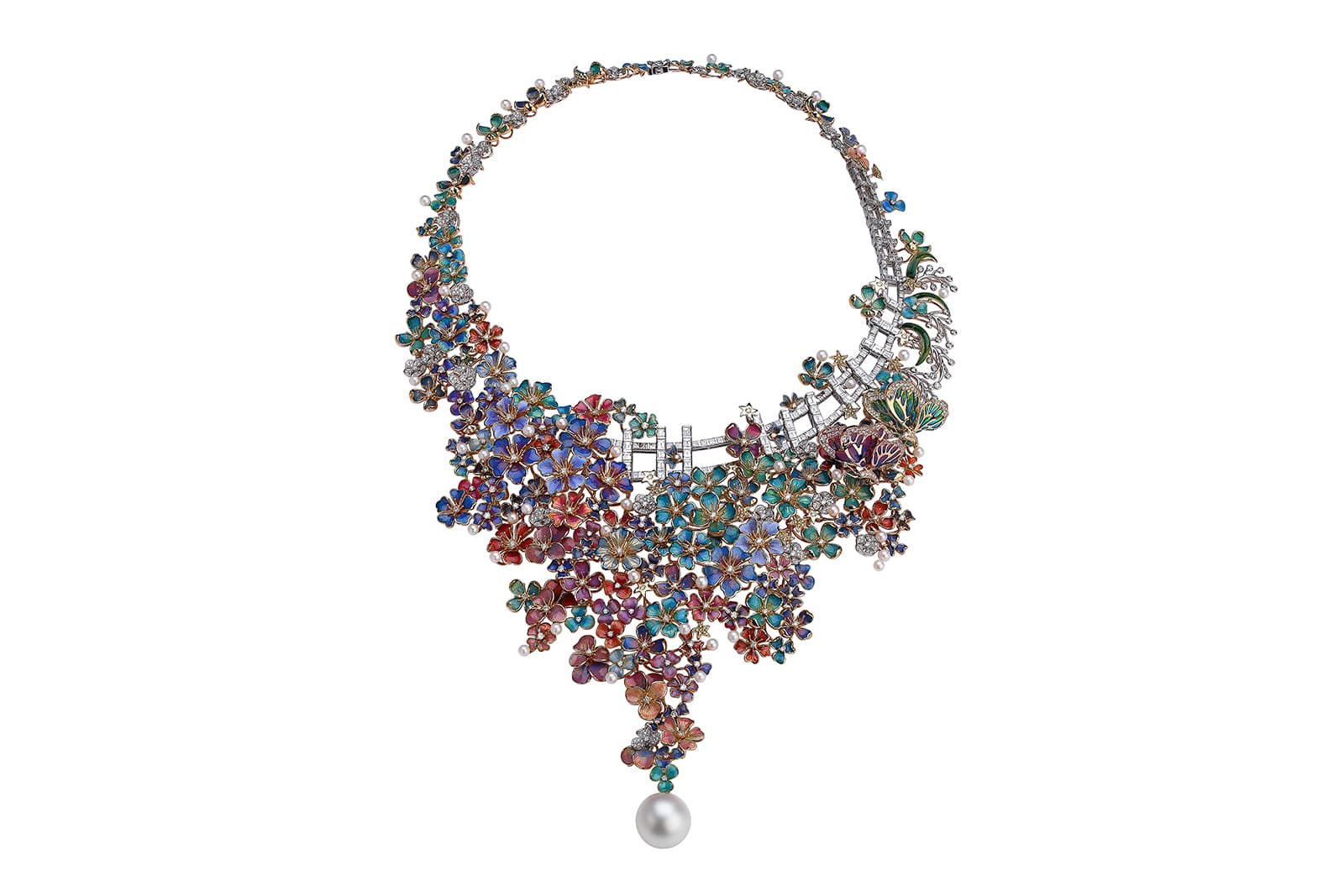
Shirley Zhang
Shirley Zhang
'Eternal Flower' necklace with diamond, pearl and enamel in 18k yellow gold
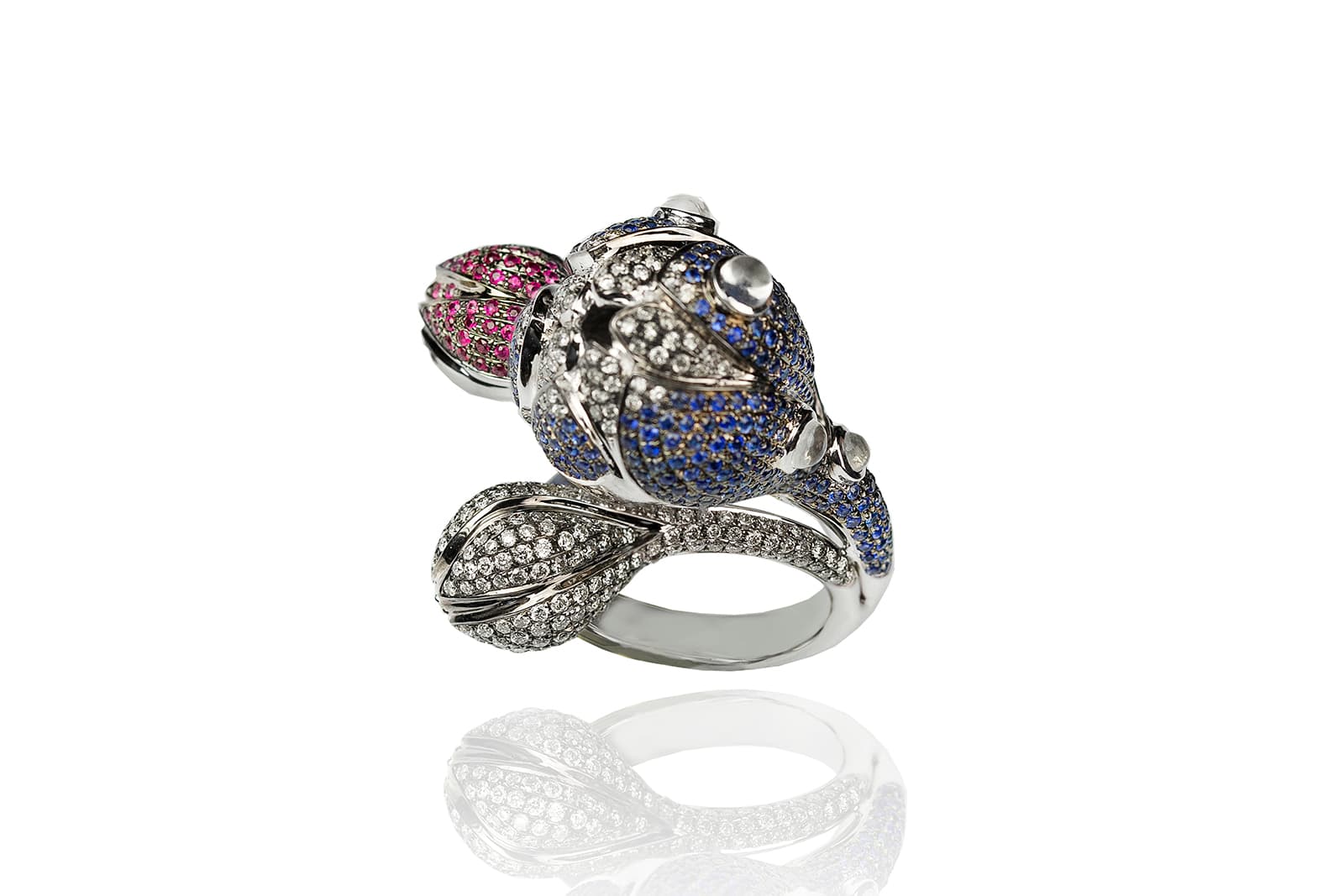
Leyla Abdollahi
Leyla Abdollahi
'Passion' ring with sapphire, ruby and diamond
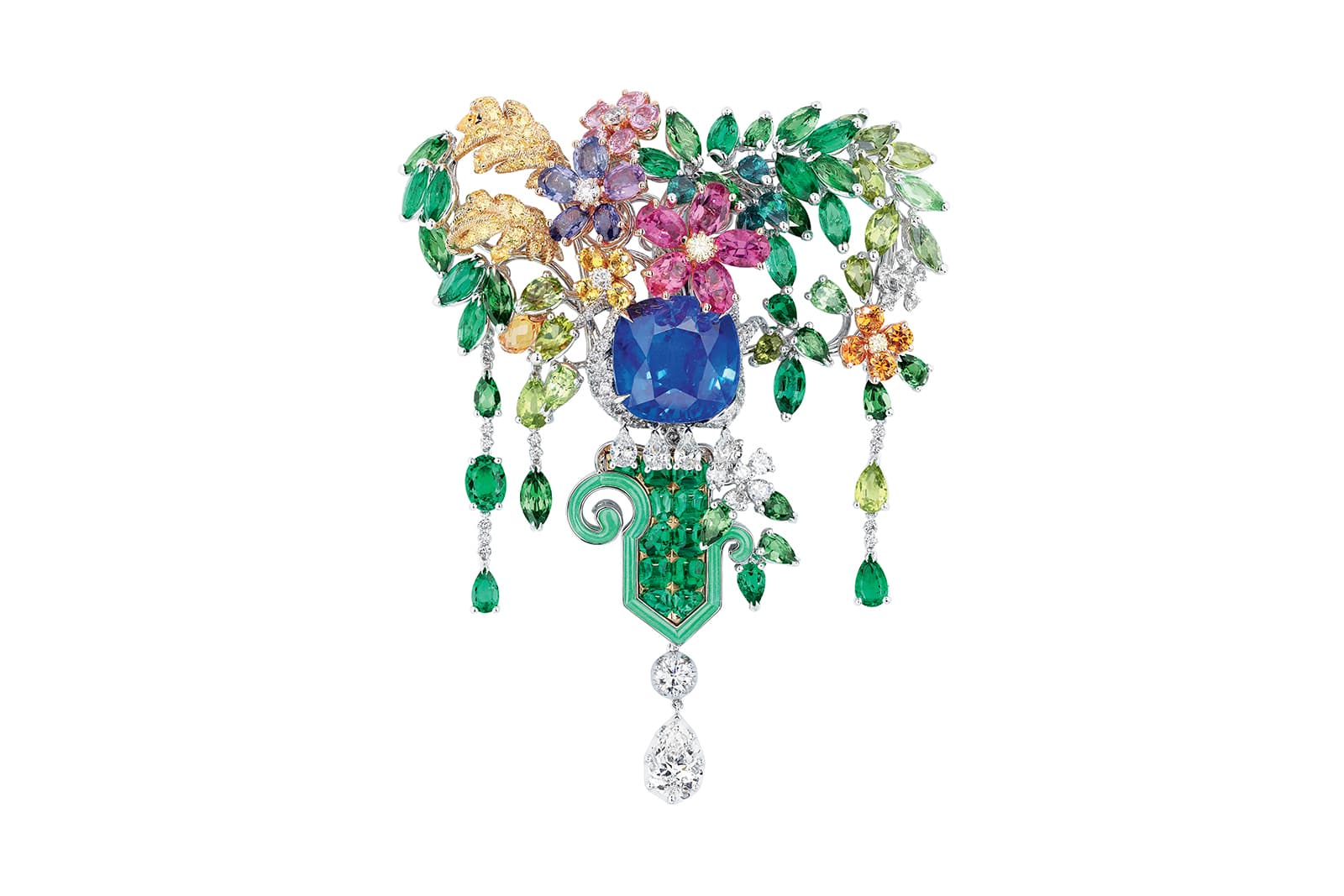
Dior
Dior
Haute Joaillerie brooch from the 'Dior à Versailles Cote de Jardins' collection with emerald, sapphire, diamond and peridot
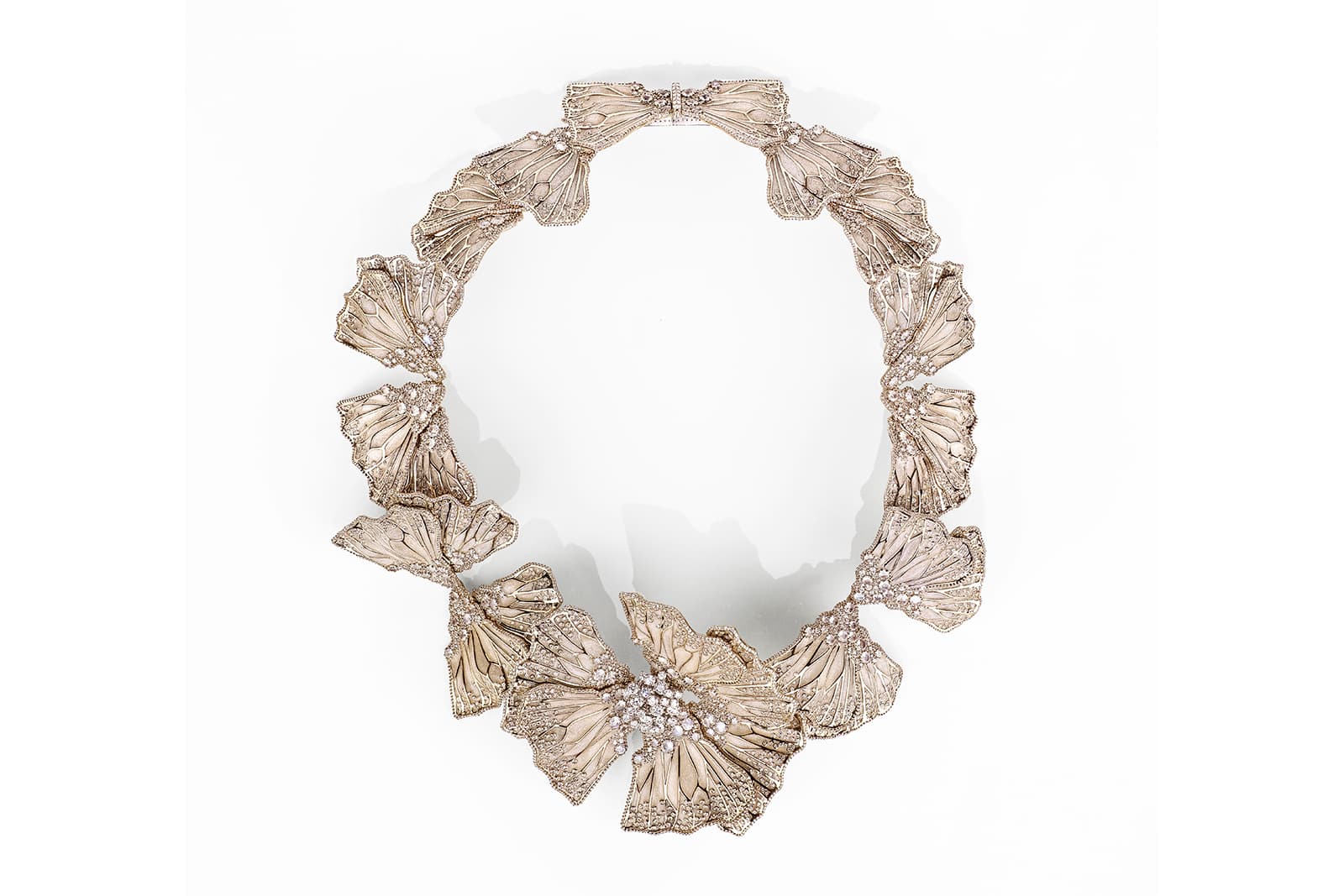
Tatiana Verstraeten
Tatiana Verstraeten
'Vienne' necklace with diamond, moonstone and enamel in 18k yellow gold
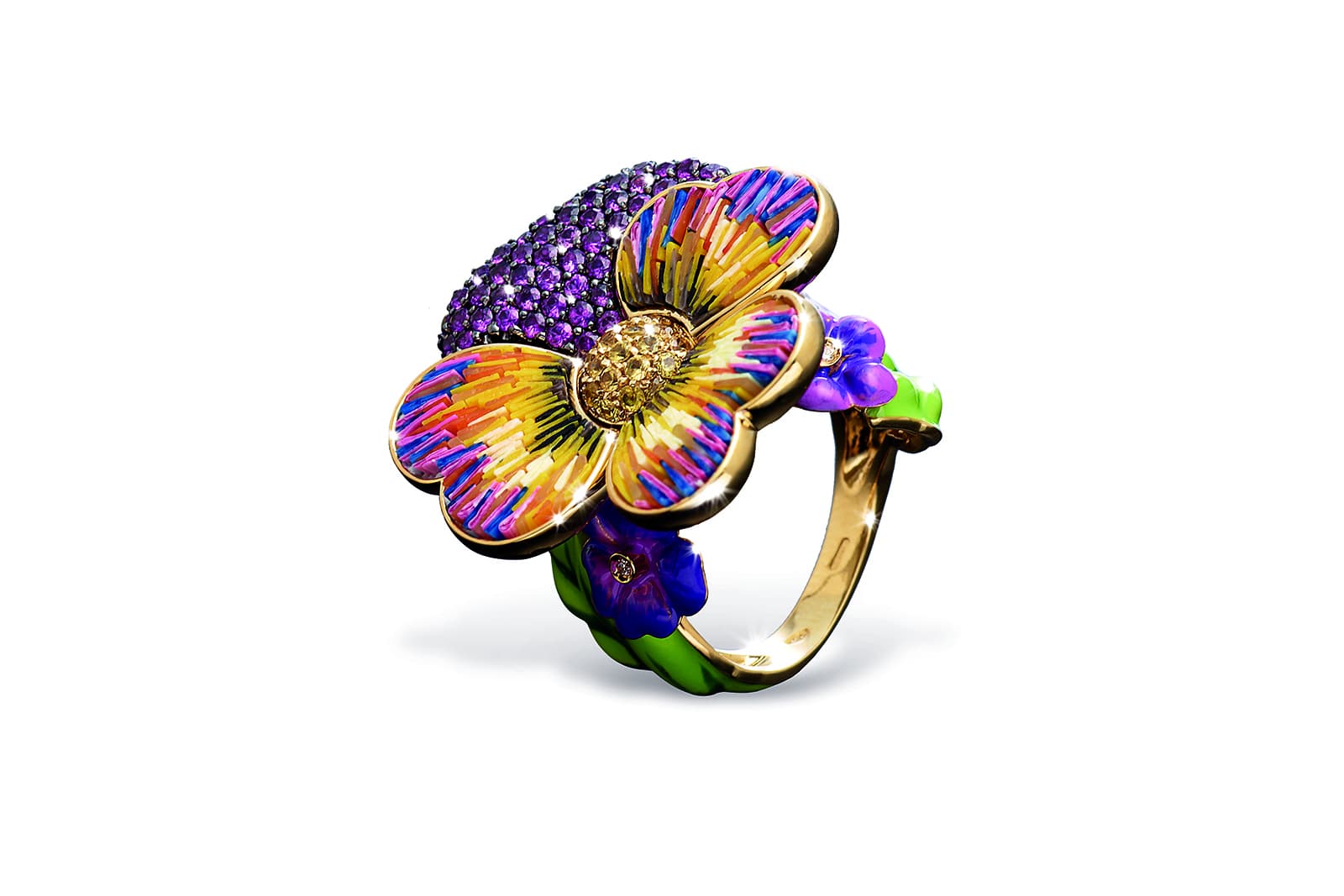
SICIS
SICIS
'Printemps Mon Amour' ring with micromosaic, pink and purple sapphire in enamel and 18k yellow gold
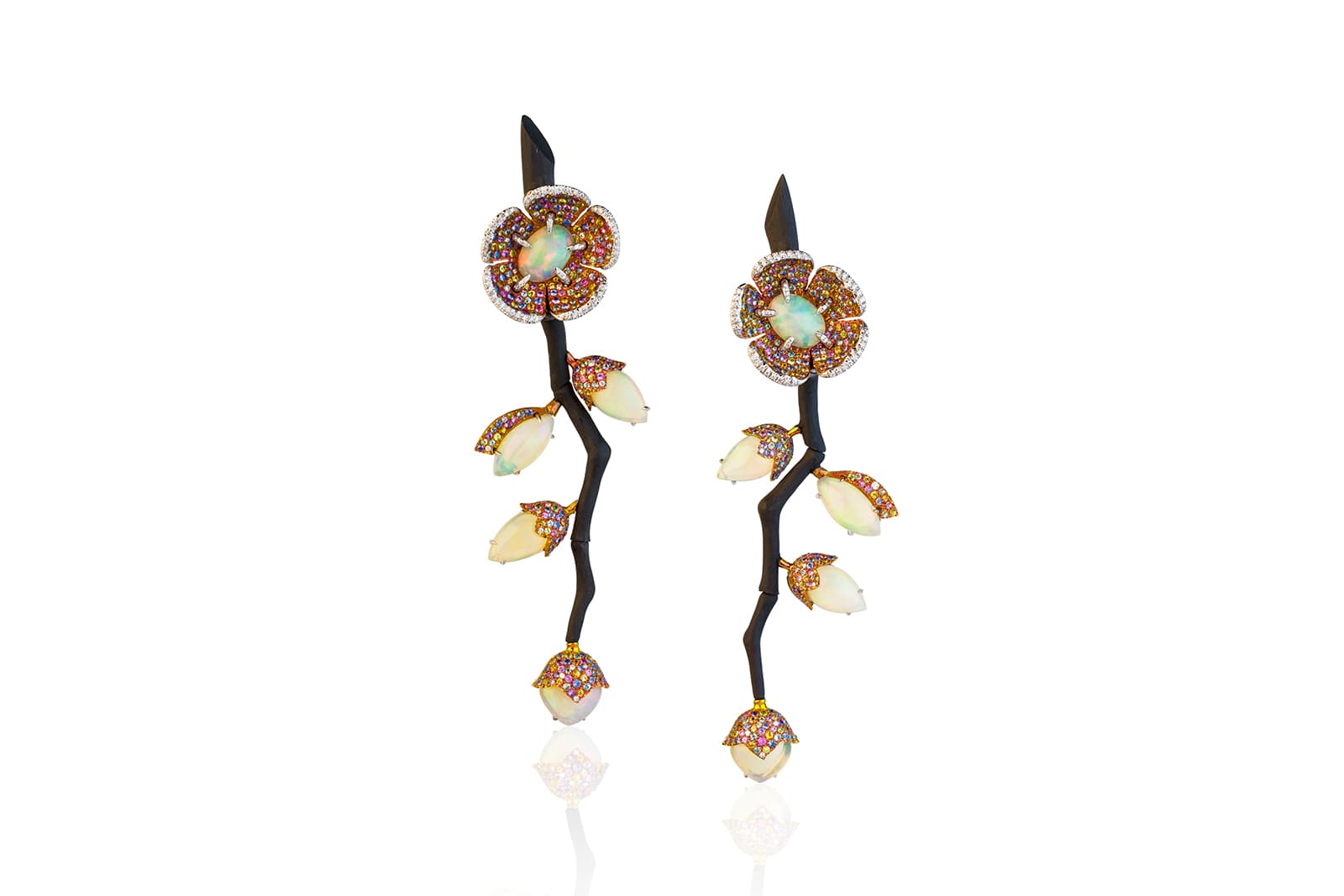
Fabio Salini
Fabio Salini
Earrings with opal in carbon fibre and gold
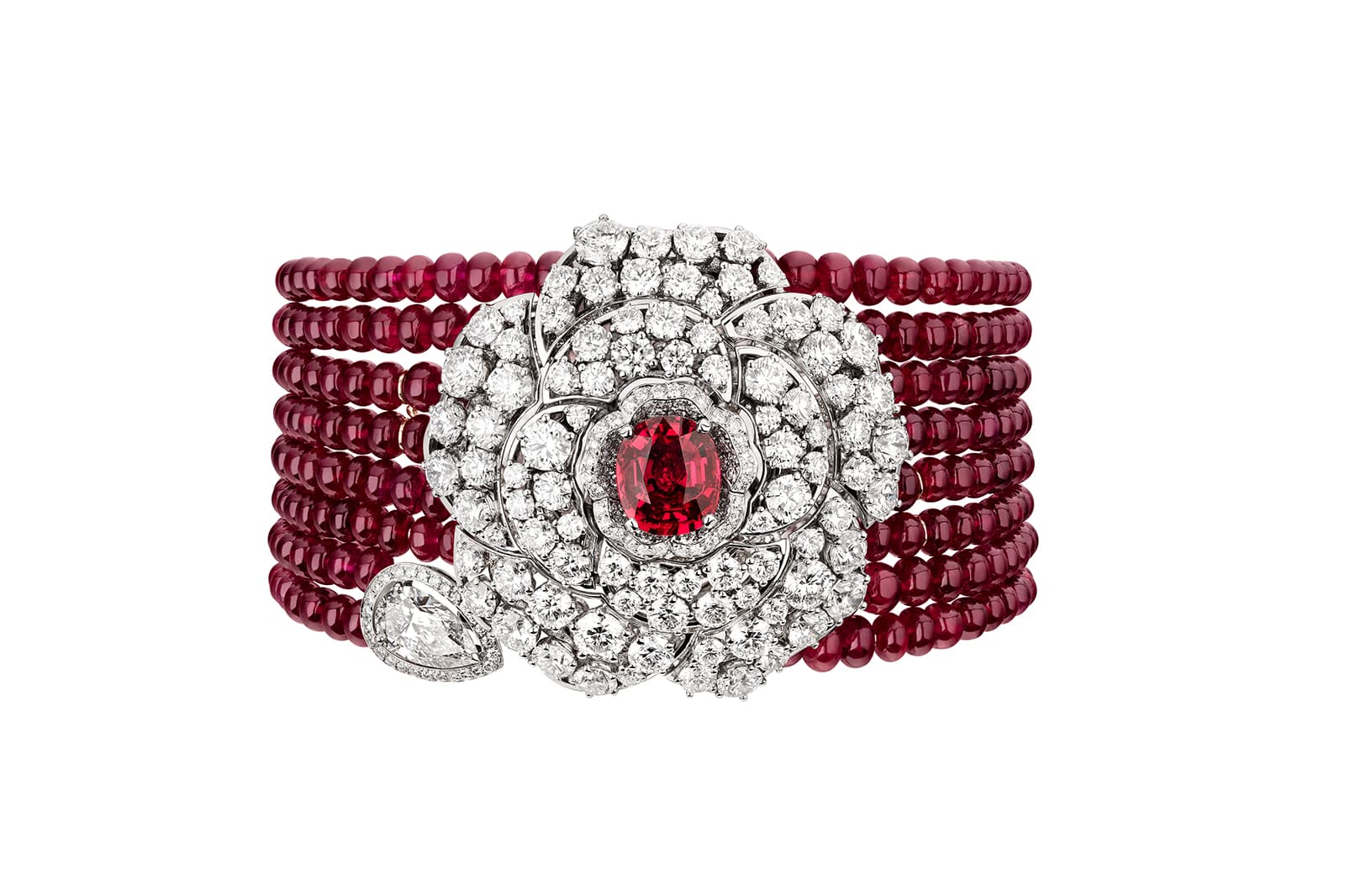
Chanel
Chanel
'Rouge Incandescent' bracelet from the '1.5' collection with ruby and diamond in 18k white gold
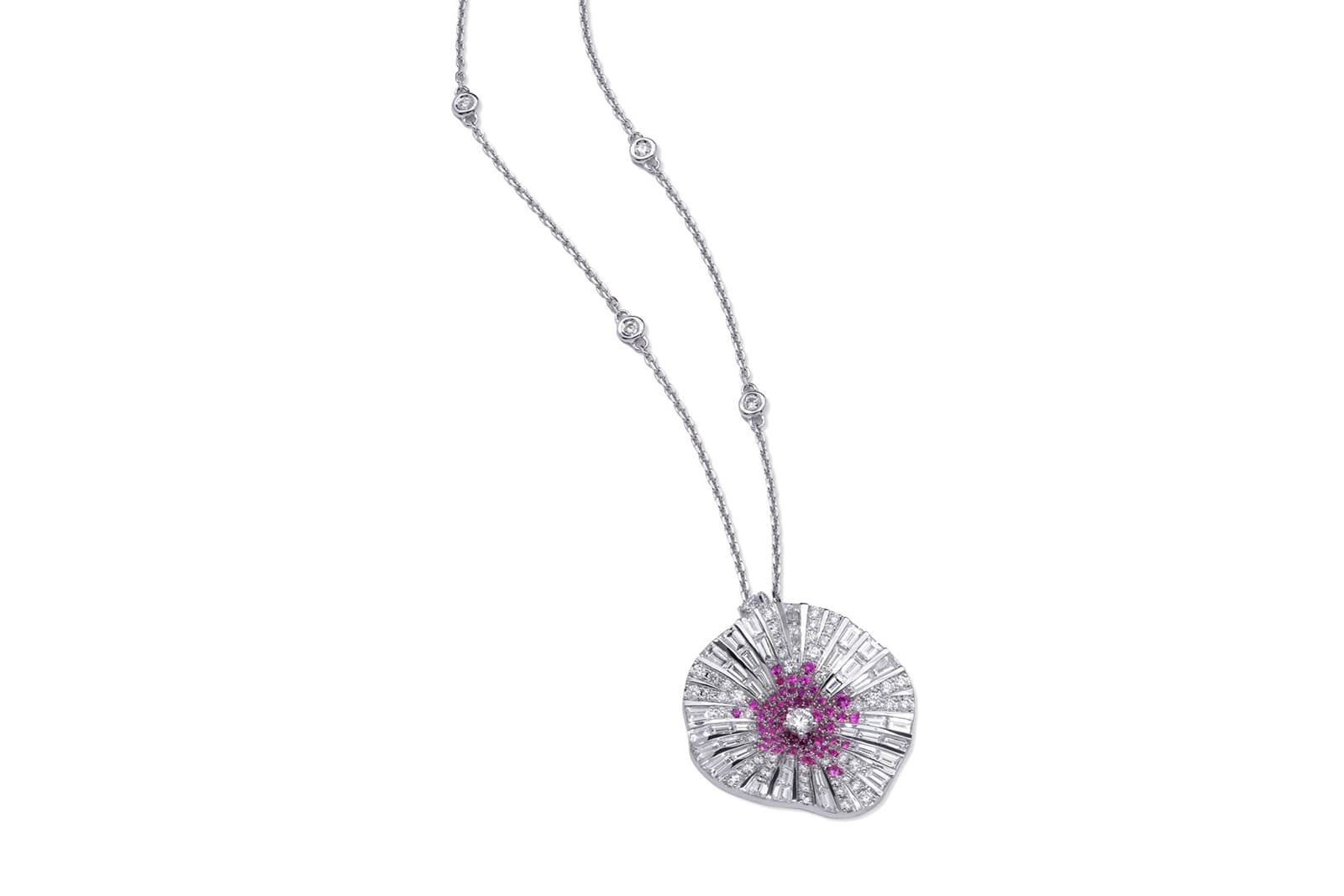
Stenzhorn
Stenzhorn
'Belle' pendant with colourless diamond and pink sapphire in 18k white gold
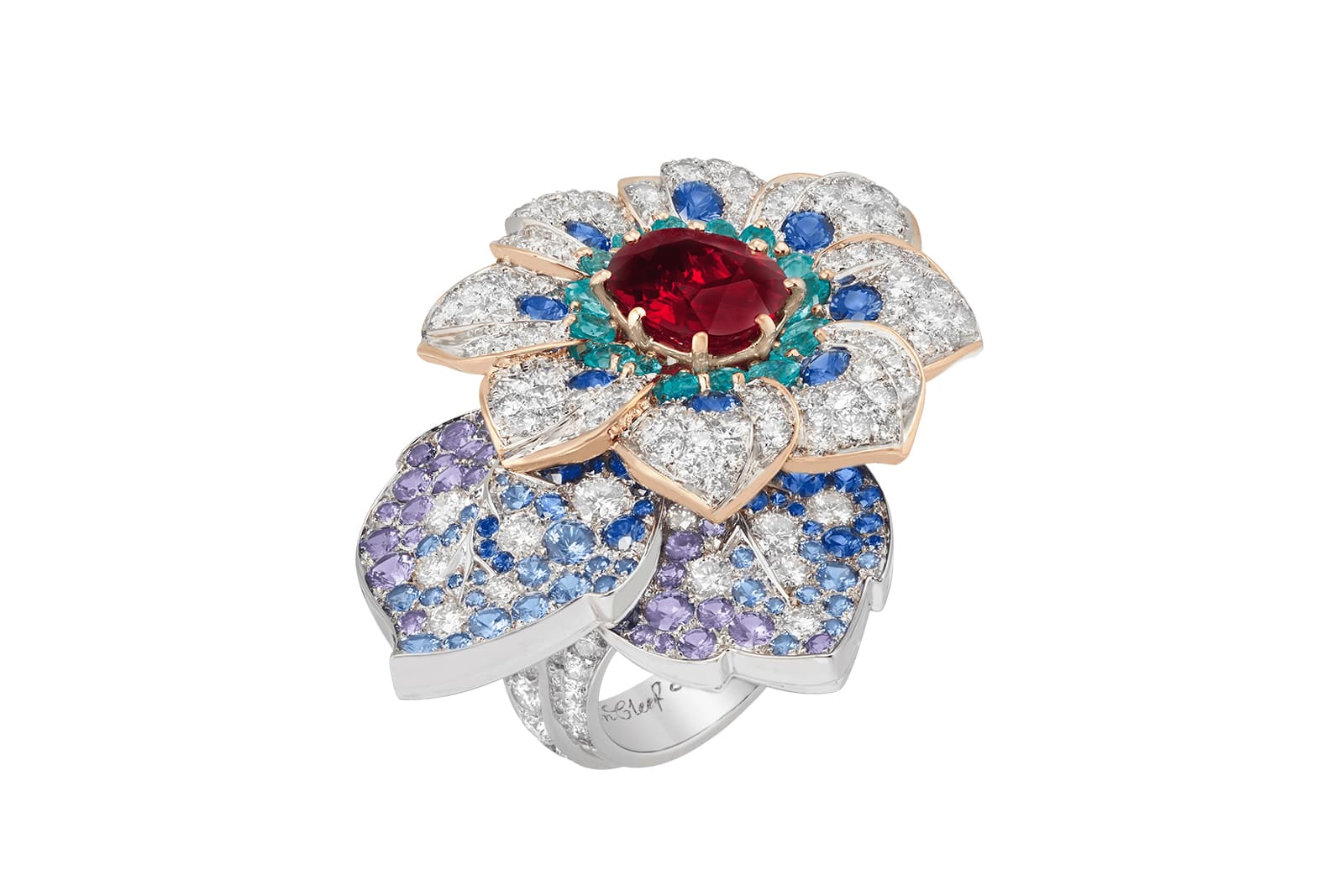
Van Cleef & Arpels
Van Cleef & Arpels
'Azalee d’Orient' ring from the 'Treasure of Rubies' collection with ruby, sapphire, tourmaline, emerald and diamond in18k pink gold
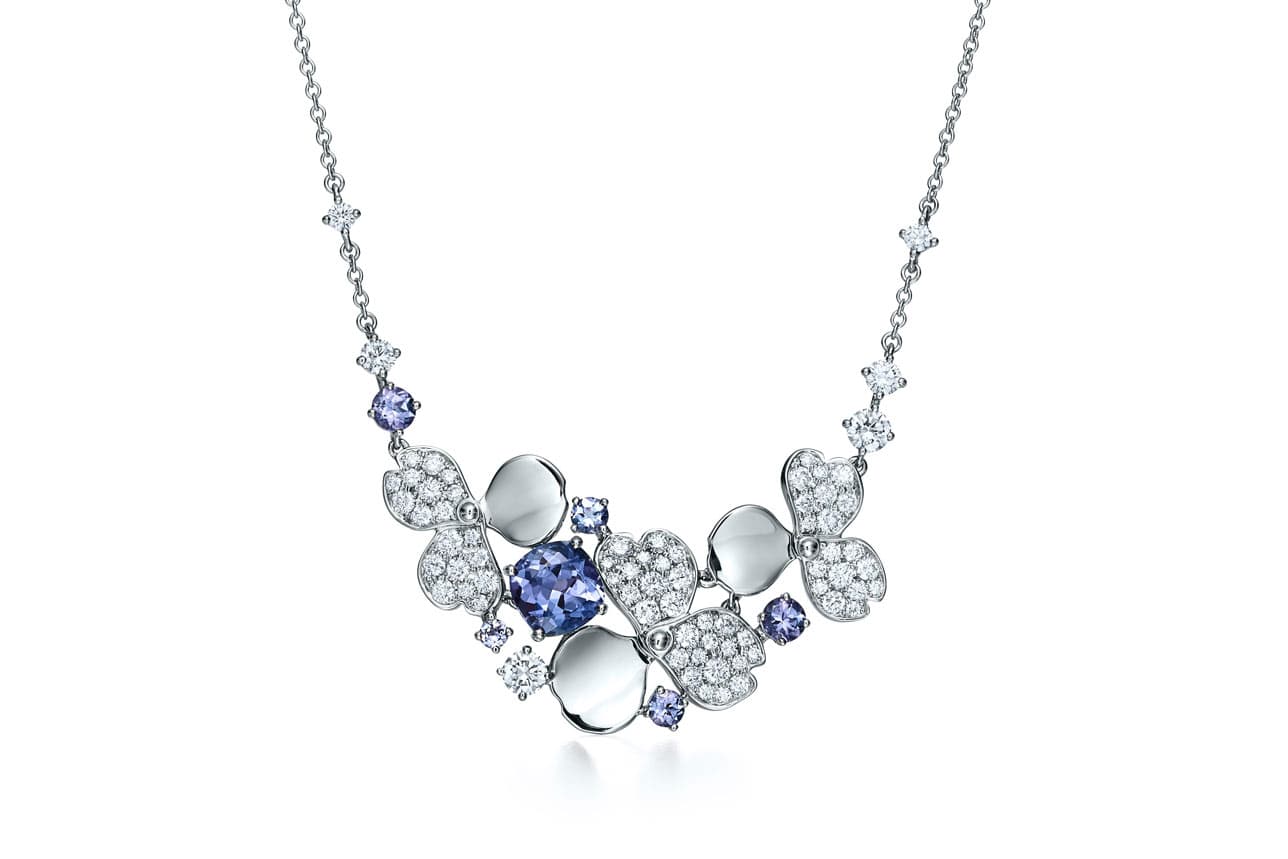
Tiffany&Co.
Tiffany&Co.
'Paper Flowers' necklace with diamond and tanzanite in platinum
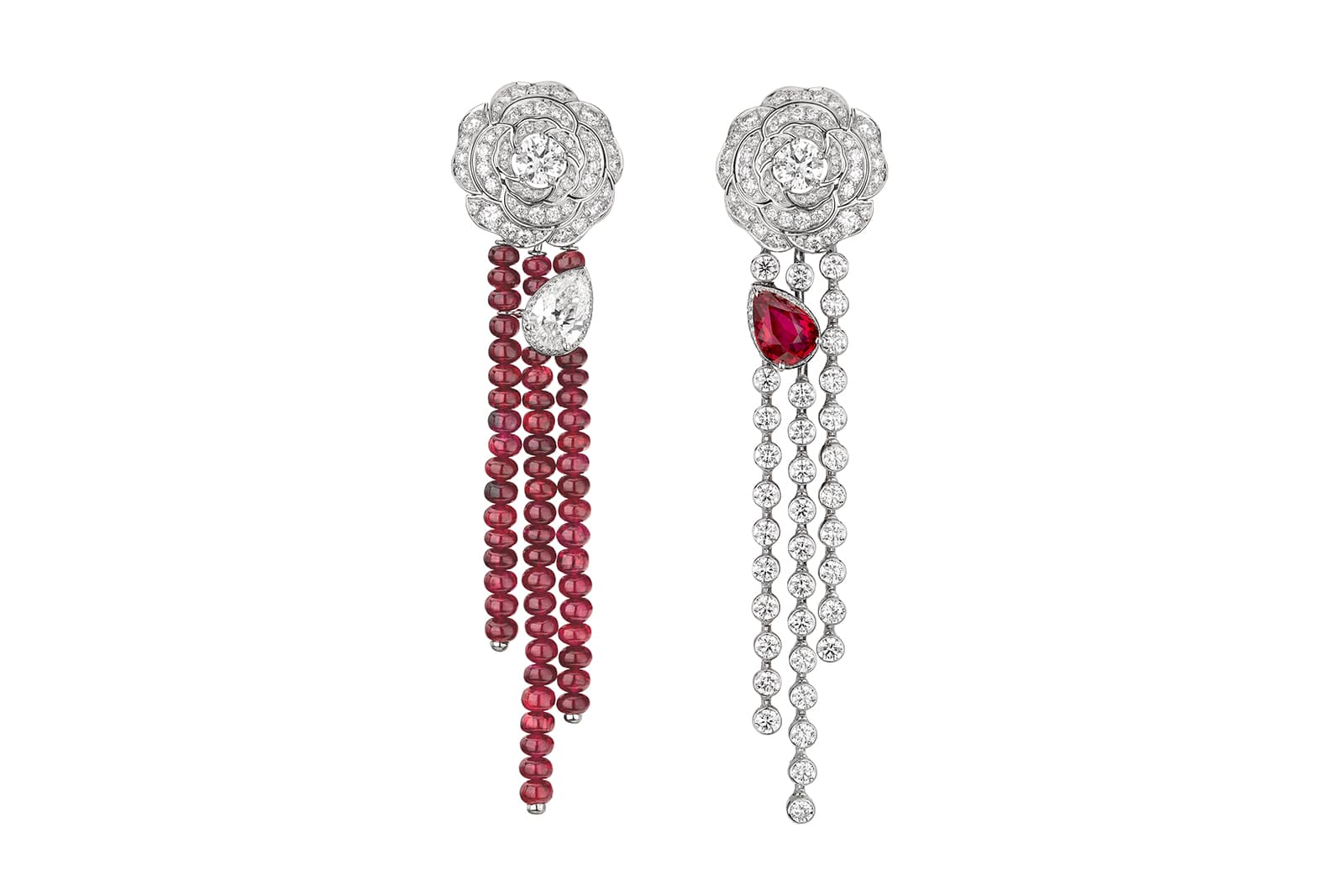
Chanel
Chanel
'Rouge Incandescent' earrings from the '1.5' collection with ruby and diamond in 18k white gold
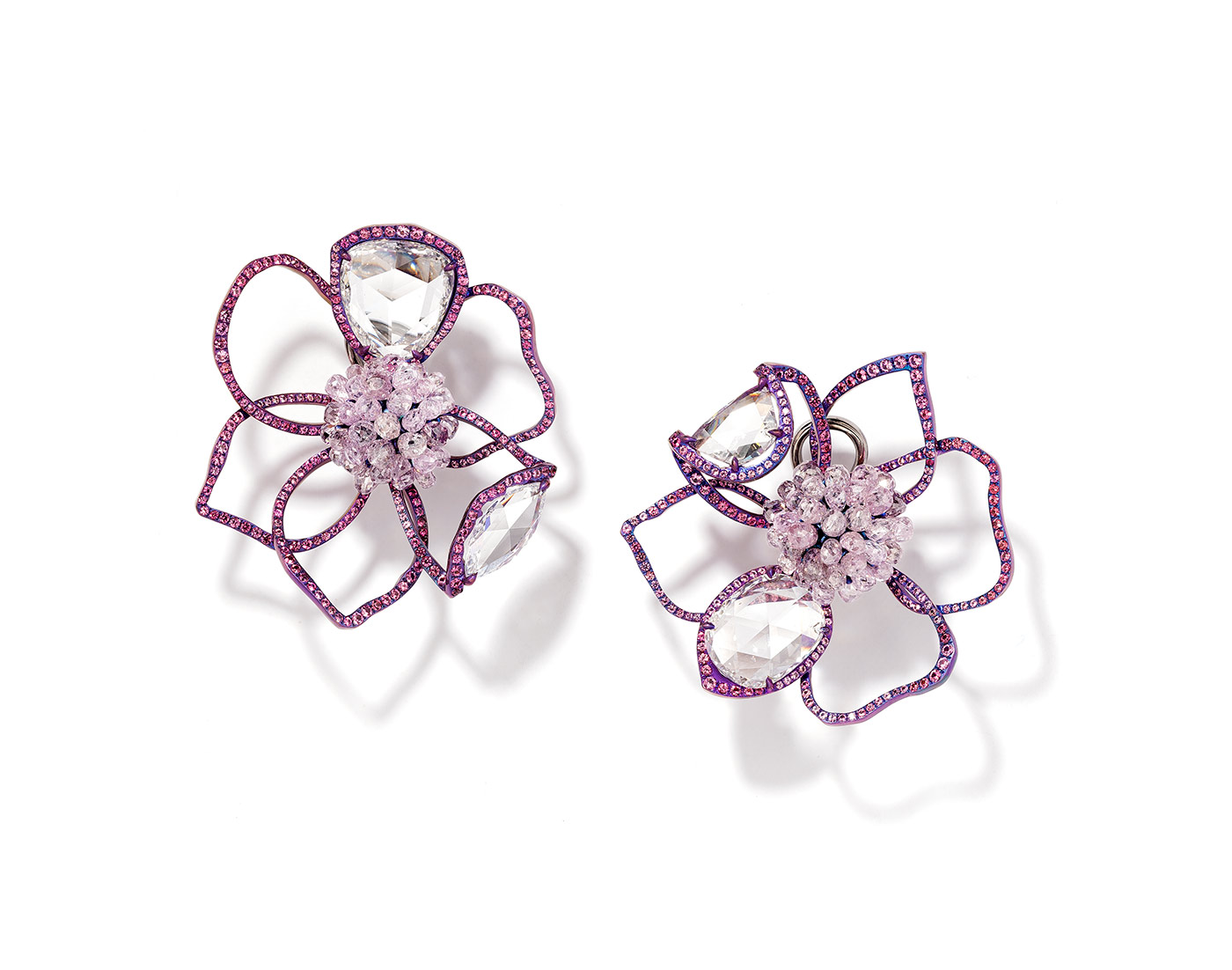
Glenn Spiro
Glenn Spiro
Earrings crafted in titanium, diamonds and spinels
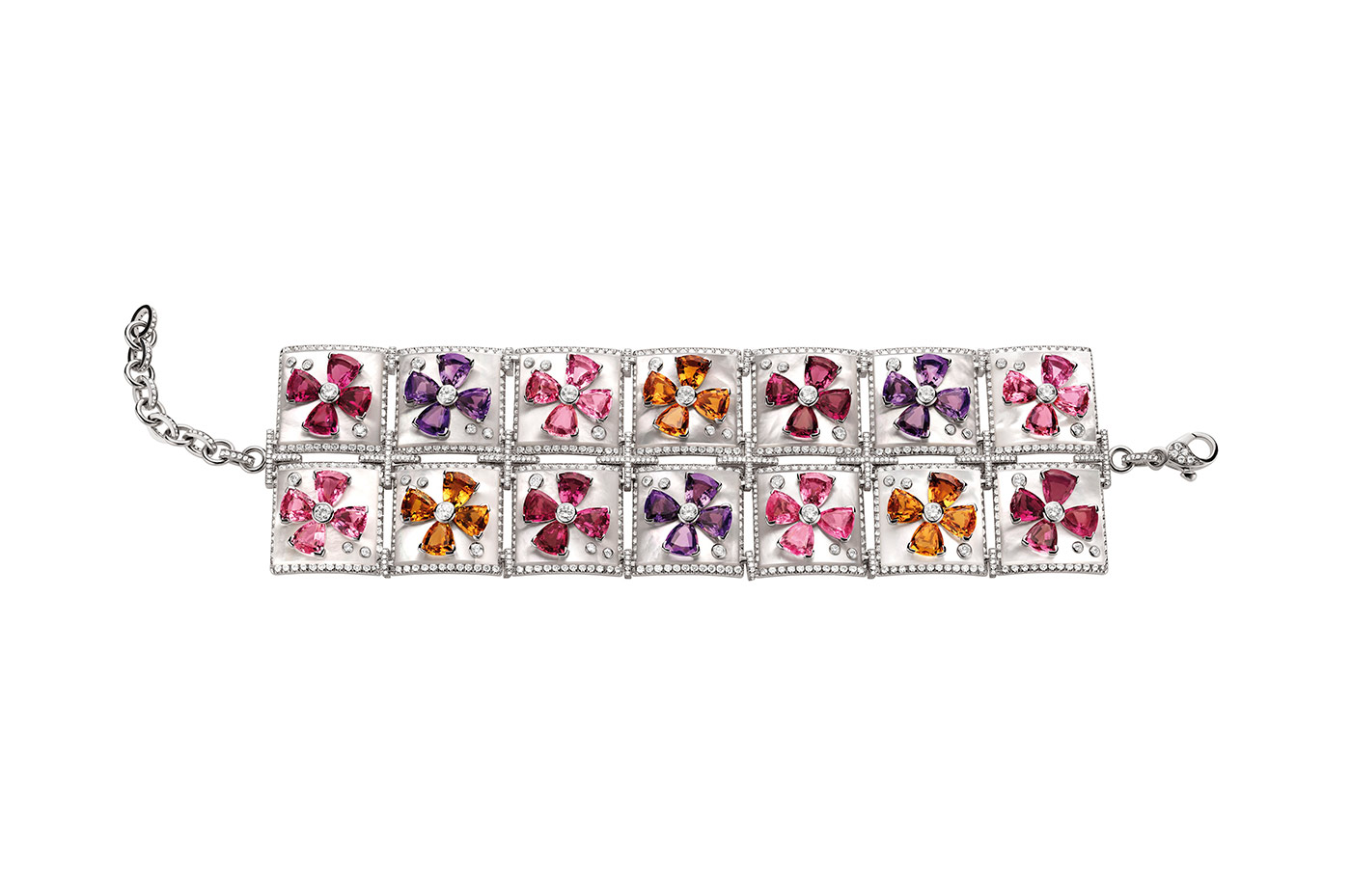
Bvlgari
Bvlgari
‘Pop Flowers’ bracelet from Bulgari Wild Pop high jewellery collection 2018 in white gold with mother of pearl, 28 rubellites and pink tourmalines, 12 amethysts and 16 citrines and diamond pavé

WORDS
Katerina Perez is a jewellery insider, journalist and brand consultant with more than 15 years’ experience in the jewellery sector. Paris-based, Katerina has worked as a freelance journalist and content editor since 2011, writing articles for international publications. To share her jewellery knowledge and expertise, Katerina founded this website and launched her @katerina_perez Instagram in 2013.
Related Articles
Latest Stories
Add articles and images to your favourites. Just

Epic Evolution:Miseno Launches the Arco Collection to Celebrate a Fabulous Decade
I am pleased to present to you my highlights of the new Arco High Jewellery collection, which was formally showcased to the jewellery world at Couture from June 4-8, 2025
Jewels Katerina Perez Loves
Continue Reading

In Conversation:Discussing Paraiba - The Legacy of a Color
with Vogue Singapore
Brand Focus: Pomellato
Jewellery Insights straight to your inbox

